Text
Funny Ladies: Celebrating Pamela Beere Briggs.

In 1991, documentary filmmaker and author Pamela Beere released a film called Funny Ladies: A Portrait of Women Cartoonists. Lauded by everyone from The Boston Globe to The Los Angeles Times, her work bringing to life the stories of talented women in cartooning is a beautiful and delightful film. However, it is devastating that she started her journey by asking the question “why aren’t there more women in the comics pages?” back in 1991, a question I found myself asking close to 25 years later (which was part of why I started this blog in 2014).
youtube
Read more about Pamela’s life on New Day Film’s website, here, and celebrate her legacy of pioneering bringing light to funny ladies in the cartooning field. Pamela had a lovely voice and an inquisitive mind, and brought attention to subjects that needed it. I hope you enjoy her films!
Hope everyone is doing well! Have a nice week! —Jane Mattimoe
0 notes
Photo
Several years ago, I asked many top drafts people to write about one the all-time best cartooning books out there. These days, it’s still a major resource for people who need to learn how to effectively compose an image that works for your gag, rather than against it.
Mort is a long time masterful artist whose work you would want to emulate. Having someone who came up during the golden age of art in cartooning giving you advice is well worth digging up a copy. I remember back in the day, I picked up a copy at The Strand, but I have since seen it at my local library.
Give it a read!

Cartooning:The Art and the Business, by living legend Mort Gerberg, is referred to as the “Bible” of cartoon guidebooks. Many of the cartoonists featured on this site have honed their craft by working through his instructions, and this blog would be an utter failure if I didn’t devote a post to it. You can find it on his website here (and if you buy it directly from him, he’ll sign it)!
Mort means a lot to the cartoonist community–despite his incredible career, he is always willing to help and teach even the humblest of newcomers. But don’t take my word for it– here are rave reviews from some popular New Yorker cartoonists:
“Mort Gerberg wrote the definitive “How To” book on cartooning. The man is a LEGEND.” –Marisa Acocella Marchetto
“This is a book I revisit a lot, particularly Chapter 5 (“So How Do You Get Your Ideas?”) and Chapter 6 (“Putting It All Together”). This last chapter is about how to compose a single panel drawing – how to create a little stage on the page that puts the idea across as effectively as possible – and it’s worth the price of the book all by itself.” –David Borchart
“I’ve had that book since I was a teenager, and it’s one of the reasons I’m a working cartoonist today.” –Joe Dator
“I have one copy for the house, one in the car.” – Bob Eckstein
“He’s brilliant at sharing his knowledge and enthusiasm! And he and his wife beat the pants off me on a snowshoeing expedition once, I could not keep up with them! Unstoppable!” – Carolita Johnson
“I had just moved to New York and the siren call of making cartoons for The New Yorker was screaming in my ears. But, to put it mildly, I didn’t have a clue. This despite having looked at some books from the library with titles like “Be A Krazy Kartoonist!!! In Ten EZ Steps!!!!!” One day I was poking around the musty dusty shelves of The Strand (back when it was musty and dusty) and I picked up Mort’s book. I don’t think I put it down for a week. So, this is how it’s done! Composition, writing. History. And, most deliciously, pages of notebooks from my idols. This was a serious, real, art – like music, or plumbing. I wore that Strand copy out (how do you wear out a book? Anyhow…) and I noticed there was a new edition at a book store (when they had bookstores) and snapped it up. I still dip into it, there are great cartoons dissected, real “tell it like it is” advice, in Mort’s expert, but human, voice and I even got Mort to sign my copy at the NCS convention in NJ a few years ago. Worth it, way worth it, even if you don’t get Mort to sign it.” –Ken Krimstein
“I’ve owned a copy of Mort Gerberg’s Cartooning: the Art and Business since I was a kid, and it remains the best practical guide on the subject that I know of. Warning: this book may actually make you into a cartoonist.”– Paul Noth
“Without reading Mort’s book I’d never have become an artist. Now I’m eager to read it again to nail down the business part.”–Tom Toro
17 notes
·
View notes
Text
A Case for Decorations.
Hi everyone! I realize it's been a second since the last interview was posted on here—I've been taking a break from Case (hopefully, I'll get back to it after the holiday season!), but I haven't been taking a break from working on little projects. I have been having so much fun making holiday crafts, that I thought I'd share some of my work, and give some tips in case anyone else was interested in making their own little treats!

I had been coveting gingerbread houses that I had been seeing at places like HomeGoods, but wasn't feeling the prices. However, I saw plain wooden LED houses at Michael's for $4.99, and I had already been making little gingerbread ornaments, so I figured I could easily make my own gingerbread house, for relatively cheap! I first layered on brown acrylic paint, followed by a glittery acrylic paint top coat. After that all dried, I used a hot glue gun to build up the larger areas of "frosting." Then, I used puff fabric paint to cover the glue and do the more intricate designs.
The gingerbread tree (far right in the picture) is a florist's cone that I got with a 60% off coupon at Joann Fabrics. That required a lot of layers of paint, even though I used a sealant before hand! I already owned the mini plastic candy canes from a previous project, but I could see being able to make them with hot glue and paint!
With this project, I found that you should never try to do the fine details when the paint bottle is more than half full, if you want more control. I also recommend doing multiple houses at once, because you want to allow half the house to dry (which takes hours!) before doing the other sides. I had originally intended to do three, but it didn't seem quite like a village, and my mom kindly gave me two more of the houses, which was a treat!
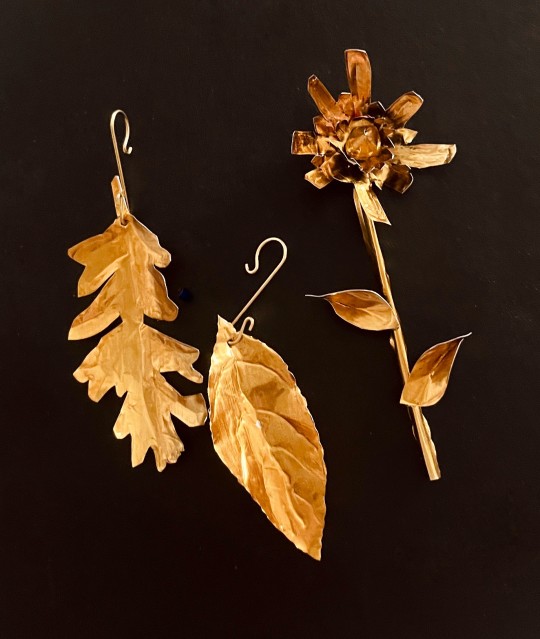
These little metal ornaments were fun and fairly simple to make! I had been seeing dozens upon dozens of cool little folksy ornaments being made out of scrap metal (such as pie tins), and had to try it myself! All you need is metal, something like a knitting needle (to draw designs), scissors, and an ornament hanger! I used hot glue to put together the flower. I really enjoyed this project, and hope to make more sculptural projects with metal soon!
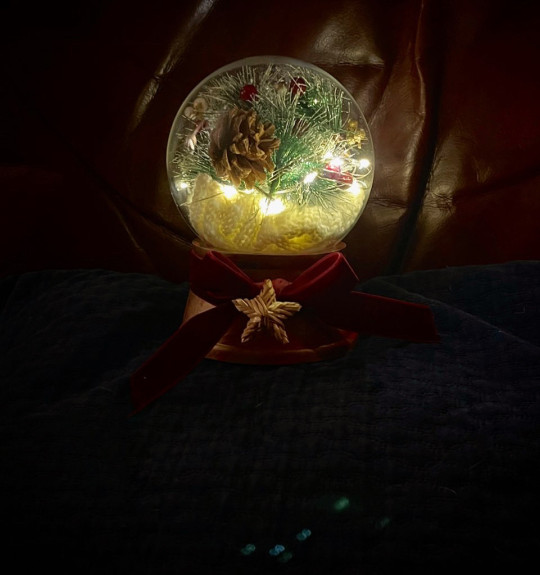
So for my birthday in October, I asked my twin brother for a gift card to Michael's, which has fueled a great many of my holiday projects! I saw these snow globes that you can fill yourself, and decided to make a holiday terrarium! You can make your own for very cheap—buy some holiday stems at Joann's or Michael's (or wherever you can find them), find a cheap glass receptacle at Goodwill, and add a short length of led fairy lights (with a timer setting of course) and you will have a beautiful centerpiece for less than $10!
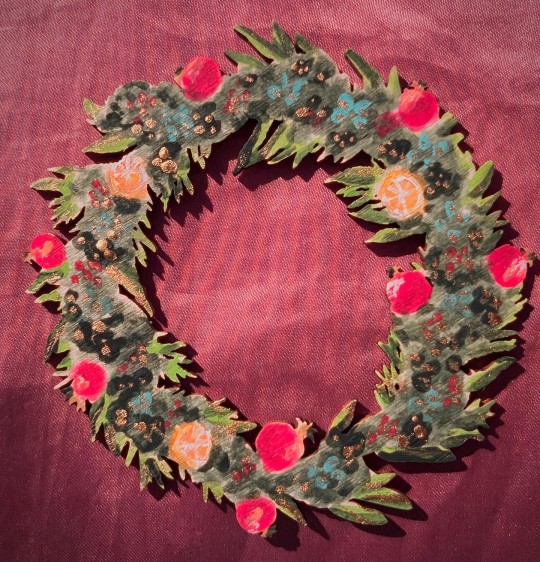
I found all sorts of blank wooden ornaments for decorating for 79 cents at Joann Fabrics, so I I have been having a lot of fun painting them. i designed my dream wreath, though it might be a bit expensive if I were to make it full size!

I have always loved dried oranges, so I decided to make them in my oven this year! Word to the wise, they take FOREVER, so don't start them at 7pm on a weekday if you are hoping to get them done before 1 am! I attached them to a garland that I got at Joann Fabric's for ~$3 during their holiday sale this weekend!

I had been seeing wreaths similar to this for years, but the ones I liked best seemed to be over $200, so I thought I'd take a crack at it myself! The little houses I had bought a while back, as Christmas tree ornaments, but I thought I'd paint them (with an extra glittery top coat), and use them on this wreath instead! Many of the trees I purchased at The Dollar Tree. The base of the wreath (not visible!) was less than $5 at Michael's (though I attached snowy boughs to cover it). If you find yourself with bare spaces, use cotton battiing (with glittery acrylic paint on top) to cover them up for a fun snow effect!

I had made a gingerbread garland out of felt and fabric paint last year, and still had plenty of materials, so I decided to make a fun wall piece with what I had left over. The spoon was my mom's idea (a baking sort of thing)!
I hope to make more little holiday crafts in the upcoming weeks, and recommend you do the same. A lot of times, artists make a lot of art for others, but I think (if you can find the time!) that it's important to make little keepsakes for yourself, that you'll get to cherish for years to come. I was thinking about how holiday decorating is often not just something you do for yourself, but a way to bring joy to others as well. I can't tell you how many times I have seen a house with beautiful lights that just made my day!
I know that this hasn't been the easiest couple of months for most people, but I hope things brighten up soon, and that everyone has a happy holiday season! I've been doing this blog for close to ten years now, and I really appreciate your continued support! I plan on working on some cross-stitching next—you can keep up with me on my Instagram here!
—Jane
----
If you enjoy this blog, and would like to contribute to labor and maintenance costs, there is a Patreon, and if you’d like to buy me a cup of coffee, there is a Ko-Fi account as well! I do this blog for free because accessible arts education is important to me, and your support helps a lot! You can also find more posts about art supplies on Case’s Instagram and Twitter! Thank you!
12 notes
·
View notes
Text
Lynn Hsu.
Lynn tells us about her methods for making her wonderful cartoons featured in The New Yorker and many other publications this week!
Bio: I worked as an architect for many years before changing paths to become a cartoonist and writer. While working as an architect, I dabbled in printmaking, painting, and humor writing, often collaborating with sketch comedy groups at ImprovBoston. When the theater shut down during the pandemic, I started cartooning, which I found therapeutic and fun, as it combined my love of drawing with humor writing. Online classes taught by Emily Flake, Amy Kurzweil, and other talented people, were incredibly helpful and inspiring. In 2022, I sold my first cartoon (below) to The New Yorker and soon after, my first Daily Shouts piece.

Find this print here!
My work has also appeared in publications such as Alta Journal, Air Mail, Weekly Humorist, Magazine of Fantasy & Science Fiction, WSJ, and The American Bystander (cartoon below).
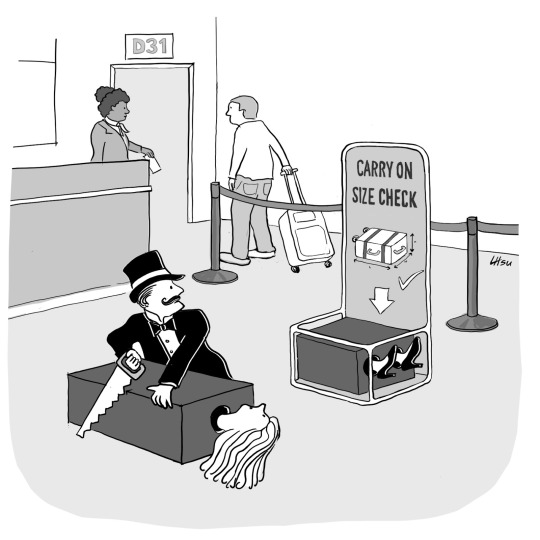
Find this print here!
While I mostly focus on humor, I occasionally write darker stories for horror and sci-fi magazines like Space & Time. Currently, I reside in Boston with my husband, twin boys, and dog, Mochi, who provides emotional support when my work is rejected
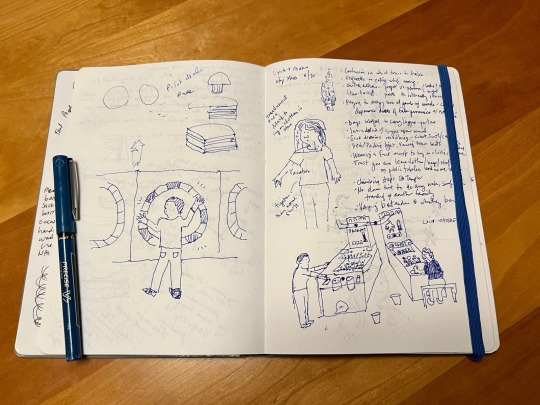
Once I have a list of ideas and rough sketches, I draw the cartoon on my Samsung Galaxy Book 2-in-1 convertible laptop. It has a small built-in pen that comes with it. My preferred app is Clip Studio Paint, which is a less expensive alternative to Photoshop. I’m still experimenting with different brushes and washes in my work. For my posture, I use an adjustable stand by Lpoake. For my sanity, I often work on the porch so I can get some fresh air and vitamin D. Mochi keeps me company and nudges me periodically for attention.
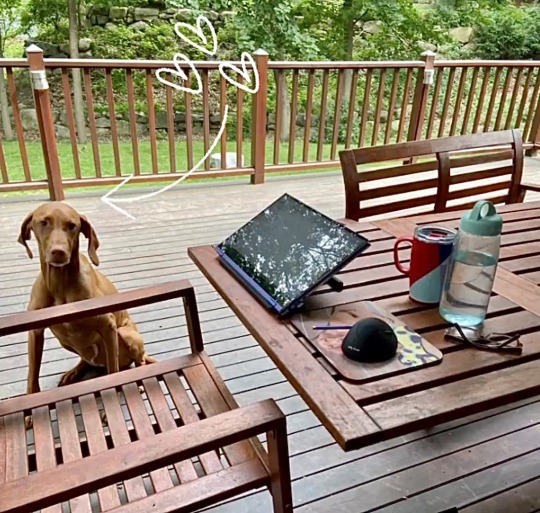
Tool I wish I could use better: Watercolor. I love painting with oil and acrylics, but I struggle with washes and hope to improve.
Tool I wish I existed: A magic chair that heals back and shoulder pain (and also teleports you to any location in the world).
Tricks: Not a fancy trick, but I’ve been using Google Keep to jot ideas down in an organized way when I don’t have my sketchbook with me. I can access this list via phone, tablet, or computer.
Misc: Getting feedback on your work is invaluable. Sometimes, I’ll draw a cartoon and think it’s hilarious, but then I show it to my husband, who doesn’t understand the caption or the sketch. I’m fortunate to have found a group of supportive cartoonists with whom I can share my work and exchange comments on a regular basis. Online classes and workshops are also great ways to learn a new craft and meet other amazing artists, writers, and humorists.
Links:
Here’s my website: lynnihsu.com
I post cartoons on Instagram:@loopyline
For New Yorker cartoon prints: Conde Nast Store
---
If you enjoy this blog, and would like to contribute to labor and maintenance costs, there is a Patreon, and if you’d like to buy me a cup of coffee, there is a Ko-Fi account as well! I do this blog for free because accessible arts education is important to me, and your support helps a lot! You can also find more posts about art supplies on Case’s Instagram and Twitter! Thank you!
24 notes
·
View notes
Text
Victoria Roberts Talks about Animation.
Today's interview on Case is a little bit different—I had been seeing Victoria's lovely animations on Instagram, and asked her if she might be interested in talking about them on here. She kindly obliged, so I sent her a loose list of questions to consider, and she sent me back such an incredible rumination on her experiences that I replied back to her "This is so cool! You are so cool!" because though I was expecting something incredible (Victoria being Victoria after all!), it wouldn't be dramatic for me say that I was thunderstruck! Anyways, I hope you all enjoy reading what she has to say as much as I did! —Jane
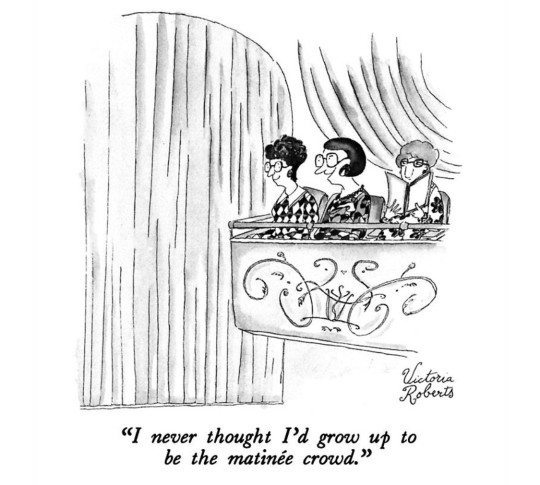
Find this print here!
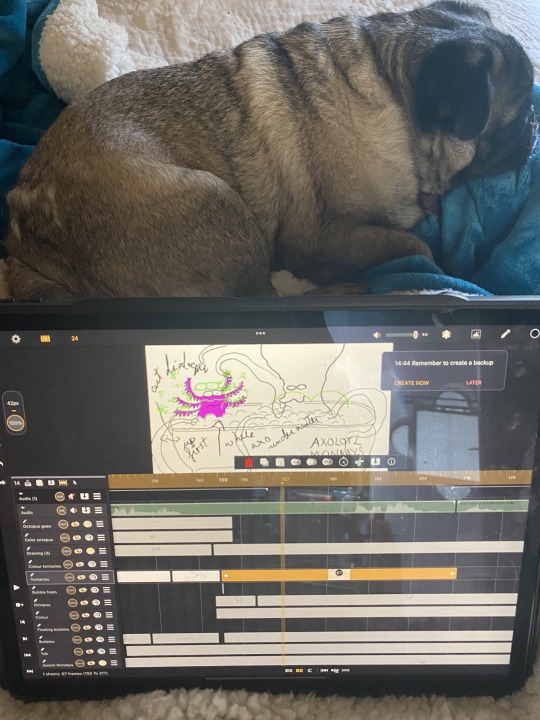
On Animation
I’m so fortunate to be working on what I love.
It’s been a long haul in a way. I came to New York City from Sydney, Australia, because I wanted to run away with the Wooster Group-that is, do theatre. Or film. I was already a cartoonist, and I became one under contract to The New Yorker, an enormous privilege, thirty odd years ago.
But since last month, thanks to a software named Callipeg, I make an animated short every week, for which I do the voices, called “Axolotl Mondays.” Finally, I’m in the movies!
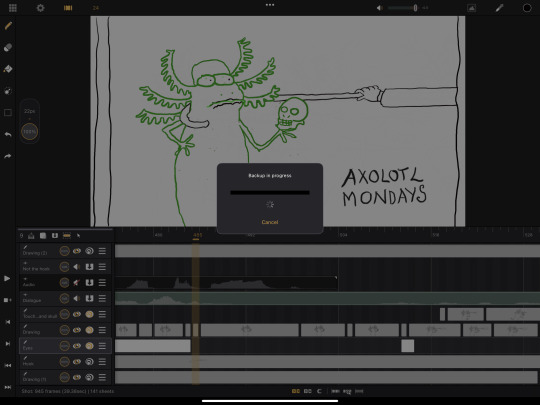
To be a performer and tell stories, or at least vignettes, is my passion. At nineteen, with $5000 from the Creative Development Fund of The Australia Council, we made “Goodbye Sally Goldstein”, a five minute animated film. I had three collaborators:
Rob Rogers, composer and musician, Kathryn Pentecost, and Jacqueline Field who drew and painted. From the sound recording, inking and painting, to the shoot, it took six months to complete. My favourite task in all of this was doing the sound breakdown, which consisted of manually running the soundtrack tape through a reader (not sure what the device was called) and jotting down the length of each sound so that you could animate to the soundtrack.
David Deneen founder of Film Graphics was my inspiration and coach. What I knew about animation came from time spent over the school holidays in his studio thanks to my mum, who worked in advertising and got me the gig. They were making an animated ad for Witchy Brew, an ice cream, and I remember they said it wasn’t until they boiled spaghetti that they got the right sound for the witch’s cauldron.
Every animator had a different style, and each animator’s desk, covered in drawings, felt like a different universe. Val Udowenko and Don Mackinnon were stars in this creative shop that went on to win the Academy Award for Bruce Petty’s “Leisure” in 1976, Best Short Film. To watch David Deneen solve a problem from idea, to script, to film, was my university.
I left school at sixteen and got a job painting cels for Hannah Barbera. The studio was run by Zoran Janjic, and his mum Zora, ran the painting department. Her “quiet girls please!” in a rich Yugoslavian accent resounded often. It was a big studio.
Sometimes we were on a network deadline so tight that Bill Hannah came to Sydney. We were paid per painted cel, working overtime, and we would try to get scenes with many mouths, as lips were very quick to paint. We stayed in over lunchtime and Mr. Hannah ordered in for us, fried chicken and coleslaw. “Would anybody like more slaw?” he offered, and the painting department cracked up at his American pronounciation of “slaaaaaaaaaaw.”
Again I had the good fortune to hear the soundtrack for a series called “Wait ‘til Your Father Comes Home,” an animated sitcom. I loved the soundtracks, and again remember the sound more than the drawings, and longed to be a creator of some sort.
Some characters come to the world with more dialogue than others. A cartoon strip though roomier than a gag cartoon with a drawing and one line of dialogue, isn’t enough space still for some characters like Nona Appleby, an Australian octogenarian character I have drawn since I was 16. Finally I started to play her on stage, and that gave Nona the opportunity to say everything that is in her heart (it’s a lot!). I maintain that I am a vessel, and the characters do all of the work.
“Axolotl Mondays” is mid-step between the page and theatre. There is the element of time in a video, which is delicate and wonderful. A friend gave me gift of a six week editing course at MEWSHOP in New York City, which gave me a very good base for cutting and thinking about time. We learned at one of their lectures that “Annie Hall” started out as a film with a stream of consciousness dialogue, but that Diane Keaton’s performances were so extraordinary that it became another film in the editing room. I mention this to underline the malleability, possibility and difficulty of film.
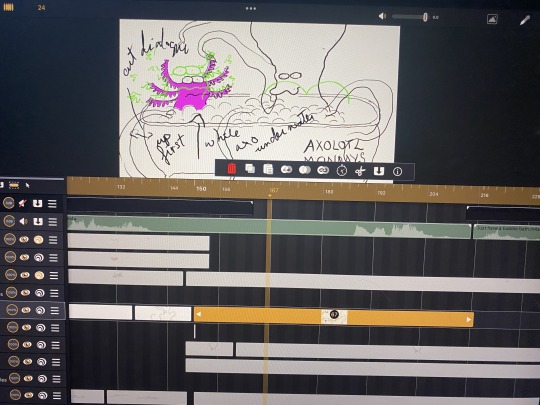
These videos start out with a soundtrack usually, but I learn something new each week about how movement and time on screen works. My animation style is very basic, which fortunately suits my drawing style. It’s detail and timing, and other possibilities which I am learning about that make a piece “sing.” As with most of my work, I rarely know what I am doing. It’s the mystery, the discovery, that keep me on board.
Callipeg is like having an old-style animation studio at your fingertips. Everything is done on the iPad. It’s so much faster than paper and cels, and cameras-and so accessible. Really a beautiful software, plus the creator’s tutorials are delivered in a native French accent!
Instagram Links:
Kathryn Pentecost is at BohemianPalaceof Art
Rob Rogers is rogers_bob
Jacqueline Field
Don Mackinnon
———-
If you enjoy this blog, and would like to contribute to labor and maintenance costs, there is a Patreon, and if you’d like to buy me a cup of coffee, there is a Ko-Fi account as well! I do this blog for free because accessible arts education is important to me, and your support helps a lot! You can also find more posts about art supplies on Case’s Instagram and Twitter! Thank you!
#artists on tumblr#victoria roberts cartoonist#victoria roberts#animation#victoria roberts animation
14 notes
·
View notes
Text
Dan Misdea.
Editor's Note: Be sure to check out Dan's new children's book, The Light Inside, available this week!
Bio: I've been contributing cartoons to The New Yorker since 2021. My work has also appeared in Air Mail, Narrative, The Times, Weekly Humorist, The Golfer's Journal, and a few other publications. My first children's book, The Light Inside, is available now.

Find this print here!
Tools of choice: I brainstorm ideas on printer paper with a .38 Uni-ball Signo RT and sketch the roughs I submit to The New Yorker on my iPad.
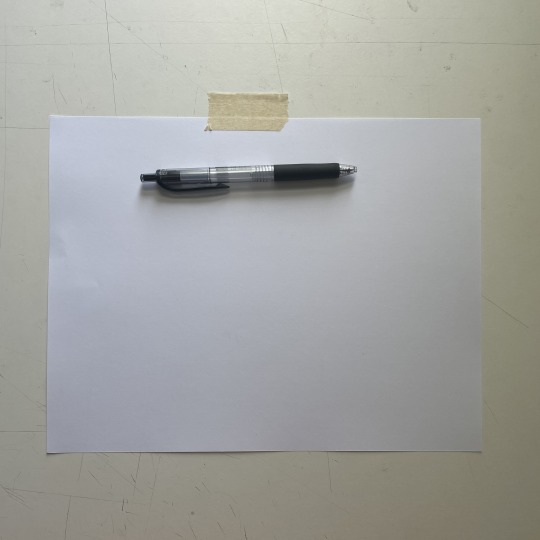
For now, my finishes go on Bristol vellum (Canson) with graphic liners (Rotring), oil-based colored pencils (Lyra), and various blenders. Occasionally, I'll use a solvent to blend and fill larger areas, or an ink wash if the drawing calls for it. I used to finish all of my cartoons digitally, so there has been some trial and error in finding the right tools.

There’s no specific reason why I switched to traditional tools. It sounds corny, but it was just something I felt the urge to explore. I feel a stronger connection to my work now, and the creative process is way more enjoyable for me.
All materials are subject to change at any moment.
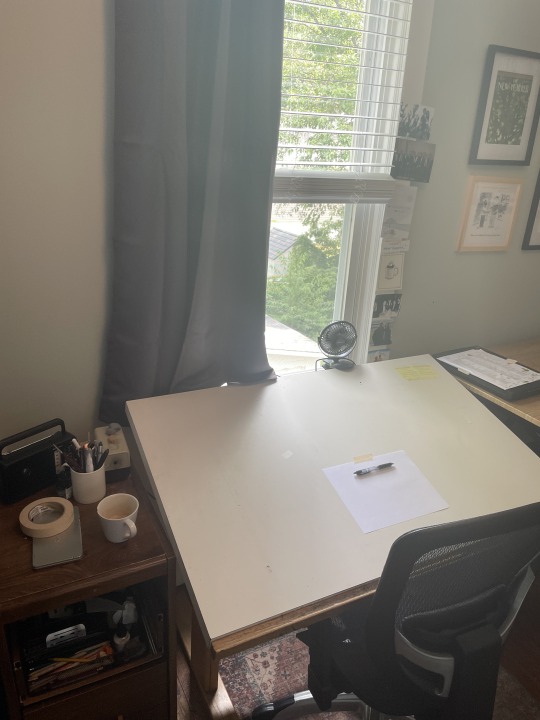
Tools I wish I could use better: My golf clubs.
Tricks: Allow yourself to experiment and remember to have fun.
Tools I wish existed: A magic tool that could scan my work and edit it to perfection all at once.
Misc: If you’re an aspiring cartoonist, I would suggest reading A LOT of cartoons. Try to notice how the pros compose their drawings and craft their captions. You’ll eventually gravitate towards certain styles and voices, and I think that will help shape your own values as a cartoonist.
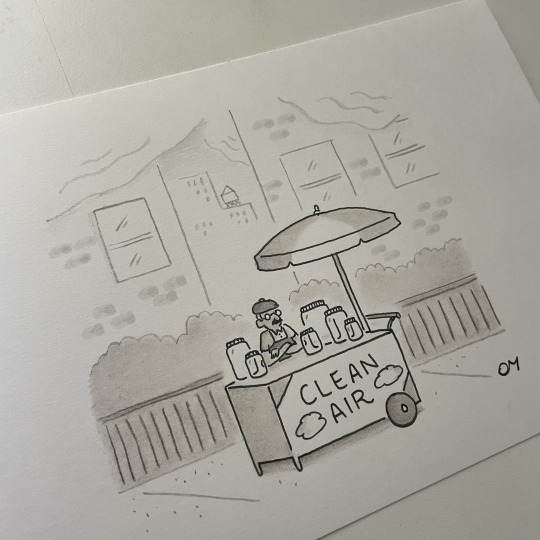
Links:
Website: https://danmisdea.com
Instagram: @dan_misdea
The Light Inside: Buy my children's book, The Light Inside, here
Curated Cartoons: Buy my original cartoons here

-----
If you enjoy this blog, and would like to contribute to labor and maintenance costs, there is a Patreon, and if you’d like to buy me a cup of coffee, there is a Ko-Fi account as well! I do this blog for free because accessible arts education is important to me, and your support helps a lot! You can also find more posts about art supplies on Case’s Instagram and Twitter! Thank you!
25 notes
·
View notes
Text
Want to hear about the art supplies & drawing process of top professionals in illustration, comics, & cartooning?
I have been interviewing people like Ralph Steadman, Roz Chast, Adrian Tomine and other top artists at The New Yorker on this blog for close to ten years as a way to help aspiring artists learn from professionals for free! You can check out some interviews if you'd like! Hope everyone is having a nice day!

37 notes
·
View notes
Text
Justin Sheen.
Bio:
Justin Sheen was born in Wheeling, West Virginia in 1995. He then grew up in the suburbs, cul-de-sacs, sunflower fields, abandoned coal mines, and AIM chat rooms of Pennsylvania, with the Penn State University creamery, roadside diners, local hockey teams, high school Spanish classes, adolescent heartaches, PIAA District Cross Country Championships, piñata contests! Fireflies! State fair carnies! Deep-fried Oreos that blacken the sink when you go to spit out toothpaste after brushing your teeth later that evening, and PNC Park one sweltering hot July 4th already a decade ago, before moving to a nondescript current location. He sold his first cartoon to The New Yorker in late 2019.

Find this print here!
Tools of choice:
Micron 05
Xerox Bold Professional Quality Paper, 8.5” x 11”, 24 Lb., 98 bright, 500/Ream
Completely empty desk
Completely empty mind*


Notice how much nicer the Xerox paper (left) is compared to a normal piece of paper (right).
Tool I wish I could use better:
T square
Tool I wish existed:
Tickle T snap square
Tricks:
In your early twenties, lock yourself in a room in Philadelphia in order to submit about a year’s worth of cartoons to The New Yorker with no hope, no connections, no one to sway you into sanity, or at least some minor form of peace akin to survival, but all in search of a sort of redemption, not quite for yourself, especially not for yourself, and not even a sort—yes, perhaps solely just a small, quiet moment will do, of an idea, or even an ideal, for some reaching out of some earnest yet desperate dream of a youth with no age, extending its hand warmly in order to be greeted and possibly shaken, into both engagement and disengagement, and at least willing to finally accept something greater than material experience could possibly hope to afford in reality. This is what we’ve done. This is who we’ll be. This is how the sudden anchor of time spreads into yet another ceaseless stream of consciousness until there are bouts of understanding and knowing of the history of our yearnings and nostalgias, our hopes and fears, and our shared confusions that one could liken, if one were willing, into happiness.
Misc.:

My electric typewriter and abandoned novel.
The electric typewriter is nice for not constantly editing, but then I need to carefully retype everything back into the computer afterward.
Website, etc.:
Cartoons published in The New Yorker: https://condenaststore.com/art/justin+sheen
Website
Instagram: @justinsheendotcom
*When you start working, everybody is in your studio—the past, your friends, enemies, the art world, and above all, your own ideas—all are there. But as you continue painting, they start leaving, one by one, and you are left completely alone. Then, if you’re lucky, even you leave. (Mayer 171)
Works cited:
Mayer, Musa. “Night Studio: A Memoir of Philip Guston.” Alfred A. Knopf, 1988. Internet Archive, https://archive.org/details/nightstudiomemoi0000maye/page/n7/mode/2up.
----------
If you enjoy this blog, and would like to contribute to labor and maintenance costs, there is a Patreon, and if you’d like to buy me a cup of coffee, there is a Ko-Fi account as well! I do this blog for free because accessible arts education is important to me, and your support helps a lot! You can also find more posts about art supplies on Case’s Instagram and Twitter! Thank you!
9 notes
·
View notes
Text
https://www.washingtonpost.com/obituaries/2023/05/09/sam-gross-new-yorker-national-lampoon-cartoonist-dies/

It means a lot that this part of the interview that I did with Sam Gross was included—it made me tear up because I can hear it in his voice. He actually was a great artist, but he was modest about it. If you look at his famous frog legs cartoon, it's a masterclass in perspective, intentional usage of tone, and composition. Everything works together to support the joke. He wouldn't have been able to do that if he wasn't a great artist.
Sam was always welcoming and willing to give advice—there was a rare honor to him, and like I had written in the interview we did together, he tremendously inspired the creation of this blog. The survey format is the way it is, because of what he had told me about his experiences with interviews.
I'm too sad to write more. It just seemed like he would live forever. Sam you were well-loved. Thank you for bringing so much joy into the world.
14 notes
·
View notes
Text
Sam Gross.

© Copyright, 1970, S. Gross. Buy this print here!
A couple of years ago, I was eating lunch with Sam and a bunch of the usual Pergola crowd, and we were talking about interviews. I hadn’t started A Case for Pencils at that time, but I had been thinking about how to go about it. Sam told me that the thing about interviews is that they are basically finished before they start, because the interviewer already knows how they are going to portray you, even before they talk to you. With that in mind, when I finally got around to creating this blog, I decided to go with a survey format. I wanted to do right by cartoonists, and allow them to be the funny, kind, and articulate people that they are, without my bungling things up! Ironically, this interview was done over the phone, so I hope I did right by Sam!
I recommend listening to the below audio clip of our phone call, wherein Sam talks about the difference between drawing funny and funny drawing, before you read this interview, because he is an inimitable storyteller, and I want you to be able to read it in his voice. —Jane Mattimoe
youtube
From L to R: Sam Gross, Jane Mattimoe (me/A Case for Pencils), Mort Gerberg, Sidney Harris. The original photo (on the photographed ipad) was taken by Sam’s daughter, Michelle, at Pergola des Artistes in 2016.
Sam: I always wanted to be a cartoonist, and at age six I drew what was possibly a cartoon, on my desk. My first grade teacher was Mrs Levy, and I guess she was my first editor, because she had my mother come in with Kirkman industrial soap, and we had to erase my cartoon from the desk. So, I knew what I wanted to do at a very early age.
Jane: You’re lucky.
Sam: Yes, I am. I am very lucky. My wife was a vocational guidance counselor —she’s retired now. She didn’t have to do too much with me.
Jane: I read somewhere that you started cartooning in 1962. Was it actually earlier than that?
Sam: I was drawing before that, and I had one cartoon that was published in Saturday Review in 1953 when I was still in college. I was doing stuff for the school newspaper— actually very little because Morty Gerberg had a lot on that, and I finally got two weeks in when he was off on something or the other… Morty and I went to the same school, CCNY Baruch… I would say professionally, it was a little bit earlier [than 1962]. I was drawing and getting published in Europe, in France and in Germany, prior to that. We were there in ‘60-61. I began in earnest back here in 1962. That’s when I started earning an income on it.
Actually, the first year I earned $985 in change, and my big client was actually— and I wasn’t doing any drawing… I was coming up ideas— but a greeting card company in Brooklyn called Charmcraft. So, then of course, after the first year I did better.
Jane: You were in the military, right? I know George [Booth] got his start in Leatherneck. Did you do anything like that?
Sam: Oh yeah, as a matter of fact, in the military I was doing cartoons for the HAC Post—Headquarters Area Command — which, I was stationed in Heidelberg, but the newspaper was in Mannheim… and from that I did a book, Cartoons for the GI, which sold very, very well. I was getting statements every month, and I was making more than my Commanding Officer, which pissed him off tremendously. Yeah, I forgot about that book.
Jane: I remember you told me that someone in the military told you that you’d never be able to get a job.
Sam: Yeah, that was my Commanding Officer. He didn’t recommend me for the Good Conduct Medal. He said to me— I was leaving the army by that time—and he said, “Nobody’s ever going to hire you. You’ll never have a job.” And he was right.
Actually, I did work in a legitimate job for six months… and I also…I guess I got a legitimate paycheck at work, you know, like I would have to file a W2 for… When I was first with that job, which actually was as an accountant, and then the other one was—which you can’t call full employed— which was when I was teaching at Pratt three semesters. I would get a paycheck there, but other than that, it’s been freelancing.
Jane: Wow! So let’s see, you’ve been published everywhere of note, written a lot of books, and you were also the cartoon editor of The National Lampoon…
Sam: I was, yeah.
Jane: Did your time as a cartoon editor affect your process as a cartoonist? I mean, did it change how you viewed cartooning?
Sam: No. When you’re a cartoon editor, the only way it affects it is the audience and the direction the magazine is going. I also was cartoon editor at Smoke magazine, and for a very brief time, Parents magazine. Now I’m not gonna go to Parents magazine and try to get a National Lampoon cartoon in there. The only way it’s affected me is by basically the market of the magazine—not the quality of drawing or the writing—but basically I had in mind the readership of these particular magazines.
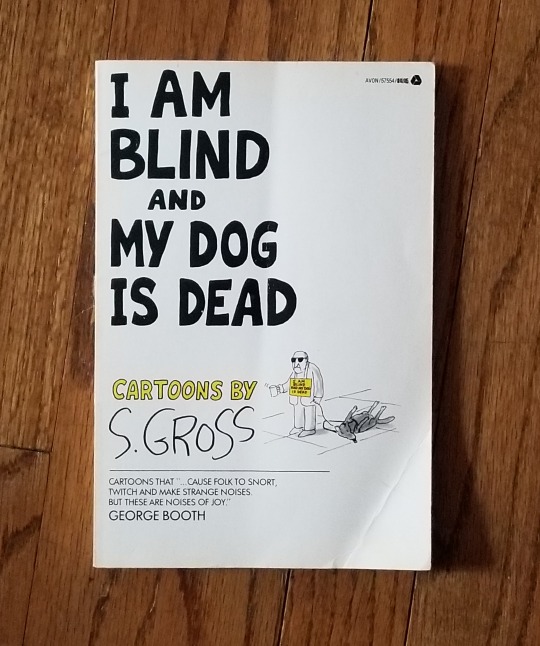
My well-worn copy of one of Sam’s classic cartoon collections.
Jane: What tools do you use to make your cartoons?
Sam: I use two old Rapidograph pens, a two and a half and a one. They’re color coded— blue and brown. I actually don’t think it’s very important what your tools are as long as you’re doing this thing. I know a number of young cartoonists think that there’s something magical in a particular tool, whatever it is. You work with what you’re comfortable in.
On one occasion, and this was at Saturday Evening Post, a young kid wanted the secret for how to do this thing. He thought the secret was embedded in your tools, so he asked around, “What paper do you use? What pens do you use?” So he asked this guy, John Elcik, who was a cartoonist at the AP, Associated Press, and he asked him, “What kind of ink do you use?” And John answered with a very straight face, “Higgens Gag Ink,” and nobody corrected him because this kid was a real noodge. So it’s a running gag now, with “Higgens Gag Ink,” because it’s so ridiculous to get involved in the tools of this thing. You do what works. And you let go what doesn’t work. Brian Savage, who was living across the street from me on 3rd avenue was drawing with brush and lamp black, and he said “Oh you have to try it!” I tried it, and I was miserable. After a day and a half I figured, this ain’t for me. There are people who instead of working with a pen, they work with a brush. I can’t work with a brush.
I’m working with these busted Rapidographs because they are drafting pens, basically. I’ve learned how to put pressure… alleviate pressure…so I can vary the line with this thing. What I have done since Rapidograph has discontinued this line of pens, and they now have cartridge pens, is… there’s this guy in Pennsylvania… Connecticut rather, who deals in antique pens, and I got enough points and enough pens… cartridges that hold the points… I guess to last me for the rest of my life. I did it just in case they decided to change the pens, which they did.
Jane: I’ve talked to so many cartoonists who are mourning the loss of this Rapidograph pen, Like Marisa [Acocella] goes on Ebay to search for them.
Sam: I’m going to see Marisa tomorrow, and I’ll let her know about this guy.

© Copyright, 1998, S. Gross. Buy this print here!
Sam: I was in Paris, and I wasn’t taking my Rapidographs, because I don’t know where and how I have to clean these things, so I went into this art supply store, and they had a sale on Staedtler pens, and I asked the lady there—because France, and pretty much Europe, is not known for fantastic sales on art supplies— so I asked, “Why is Staedtler being so good to me?” and she said, of course, “Because they’re discontinuing these pens.” I use these pens…they’re waterproof, and they’ve got various points. They’re not as comfortable, but basically if I’m in Europe, I’m not doing any finishes, so I can use them for sketches. If I sell something over there, and they want something immediately finished, I would have to sit down and do it with a Staedtler pen.
Art supplies are diminishing because of the computer. Pretty much every art supplies store in New York is gone. There are plenty of places with art supplies departments, like Staples. The place I go now, on Madison Avenue, it used to be an art supplies and stationary store, and the guy moved over to Lexington Avenue, and he basically had the same thing…and also a printing business…he’s sort of limping along, and I make sure I go in and buy stuff there just to keep him in business, for godsakes!
Jane: You know, running this blog has really driven home that, like you said earlier, there isn’t a magic tool. I’ve interviewed dozens and dozens of people, and everyone has different tools that they prefer. So I agree, it’s just whatever you’re comfortable with…
Sam: You know, I’m not very good with color…Doctor Seuss was not very good with color…among other people— same with Shel Silverstein— they had it added mechanically, and you can see that in the Dr. Seuss books and The Giving Tree. Occasionally, I have to conquer my disabilities— because I’m doing greeting cards or whatever —to work with color. So with that, I guess I use the cheapest watercolors for working this stuff. I also know my limitations on this stuff… and my brushes are for wash and half tones… probably kinda beat up, but they do the job.
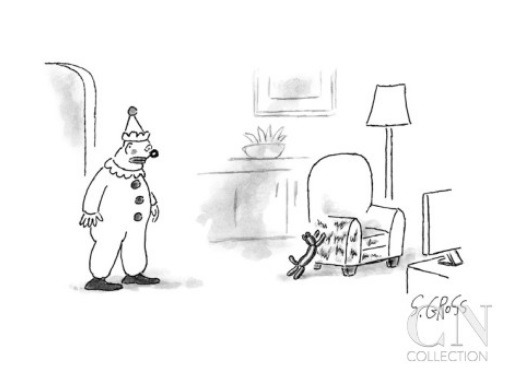
© Copyright, 2016, S. Gross. Buy this print here!
Jane: You take a while to do each cartoon, right? You do a lot of cartoons per week, and your cartoons look deceptively simple, but I know you really think about where each line goes. I remember that you gave me some of the best advice I’ve ever gotten for cartooning, which was was that you told me to draw funny, and I think what you meant was to make sure every line help propel the joke, rather than wasting space with superfluous details. Did I interpret that right?
Sam: Well, there’s a difference between drawing funny and funny drawing. Usually a lot of people who can draw very well— really good artists— when they go into cartooning they’re doing funny drawing rather than drawing funny. Because they—I don’t know—in other words they exaggerate the nose…which possibly is not pertinent to this particular cartoon. They’re making funny drawing. Drawing funny is…George Booth draws funny, Bill Woodman draws funny… people say that I draw funny. I guess I do, in a way, but not as funny as their drawing. Sergio Aragonés draws funny… and I take— sometimes, which I’m doing now— I take two three weeks to do a drawing…just looking at it, and deciding… I don’t consider myself a great artist, or even that much of a good artist, but what I consider myself is a really good gag man, a really good person that can tell a joke, that’s what I do. You know, I’m weak in perspective, I can’t draw a horse to save myself…but a lot of other people can’t also— I’m in good company with horses, or lack of ability to draw horses. But I can tell a joke… and it takes a lot of work to do that.
Jane: Some people say either you’re funny or you’re not, but do you think people can improve their ability to tell a good joke?
Sam: Yeah I could see it over the years. Stuff that I did In 1969, when I began with The New Yorker, and getting in jokes…and drawing… to now, you know if I just go back in my files to 1969, I guess the initial reaction would be to hold my head and go, “Oh my God!”, but I’ve developed from there, and I realize that’s where I was in 1969. And there are people, without my saying any names, that have been drawing the same way for 20-30 years, and to me it’s amazing that they can do whatever they did 20 years ago, not that I would want that. You know, I’m very happy that I’ve advanced to the point where my drawings are totally different than I did in 1969, and before that between ‘63 and ‘69… and actually, up until ‘73 or so, when I was doing a lot of gags… writing for Charles Addams…he worked with gag men. I realized—George Price was actually walking around with my wife at a gallery of his stuff, and he was showing [her] various drawings there. And at that particular time, I was somewhat appalled that my idols were using gag men— one of them of course being Charles Addams—and [Price] turned to my wife and said, “you know, I’m not really involved with gags—I’m involved with furniture,” and it really gelled, and then I realized with Charles Addams, he was involved with mood and architecture, and some of these other guys that were buying gags, they weren’t very involved in germinating the idea, but once they had the idea, they could then work with it, and then come out with something really, really good. So some cartoonists are just different. You know there’s one cartoonist that can draw anything, but for the most part he uses set gags

© Copyright, 1991, S. Gross. Buy this print here!
Jane: So I was looking at your Wikipedia, and it says in 2012 you had a total of 27,592 cartoons. What’s the tally now?
Sam: 31,577.
Jane: Wow!
Sam: Well what I do is I throw out a lot of gags. I’ve probably thrown out over 5000 gags. You throw out gags cause they’re obsolete. Let’s say the gag —the idea— involves a rotary telephone, which there aren’t any rotary telephones anymore! Or a phone booth, of which there are very few. I think there were two left in New York City on West End Avenue. There was an article in The Times on that. So you throw this stuff out, you throw out stuff that’s obsolete. Including, let’s say five years from now, if I had a gag on Trump, or if I had a gag on McCain… you throw out a gag or idea if it’s lousy, “Oh my god, what was I thinking about?!” Out of 31,500 gags or so, I have duplicates, “Oh my God I did that one, there it is again,” so I throw that out. This keeps me sharp, otherwise I would probably need a larger studio… Yeah, 5000 gags takes up a lot of space.
Jane: Wait so you throw away cartoons? Actual physical drawings that you’ve done?
Sam: Yeah! And there are other drawings, by the way, in my books…and I look at this thing, and it’s my gag, it’s my idea, and I don’t get it. I don’t know where my head was when this thing was germinating in my mind. I have no idea, and I look at this thing and go “huh?!” I just get rid of it.
Jane: So you’re not like Mort who has a storage facility with thousands of cartoons…
Sam: No, no—I’m not gonna have a storage facility. I have a studio down the block from where I am. And actually, since I own it, and I’m paying maintenance on it, I’m probably not paying much more than he’s paying on his storage facility, wherever the heck that is.

© Copyright, 2011, S. Gross. Buy this print here!
Jane: I used to store my cartoons in a stack under my bed in my old apartment, and the mice let me know what they thought of my work by sh-tting all over it.
Sam: That’s another thing by the way, with piles—there’s one cartoonist I know, his system, as far as cartoons are concerned, one pile is horizontals, the other pile is verticals. That’s his system. And what I tell some of these young people at The New Yorker, which you’re aware of, because you were one of them, is to control the volume of this. And one way is to number them on the back, and then every one of them is an inventory number. Otherwise, when stuff goes out to Whoopie magazine or something, you know that you’ve sent this stuff out. Now you push scan and send it out, but you sent out 2831, 3743, with 16000… and you know which cartoons were sent out without having to describe them.
Now what I don’t do, which people think I should do, and I’m possibly gonna have to, is scan these things and put them on a disc or whatever. I really don’t want to do that now, because I don’t want to get into the nitty gritty, and of course I’m gonna have to hire somebody. I’d rather just sit down, draw, and create. And I’ve got this system well enough that if you need something—let’s say it’s a men’s magazine—I go to my “Men’s Magazine” folder, and I pull something out. If you need something for natural history—let’s say turtles — I can pull out something on turtles. As a matter of fact, I had a request a while back for dental cartoons, and I thought I never had that many, and I went into “medical,” and I had enough there to open a full file on dental.
I keep it loose, but not very loose. There is a control. I can go into something, and pull it out,or get it… at worst I think it can take twenty minutes. But there’s a method to this madness.
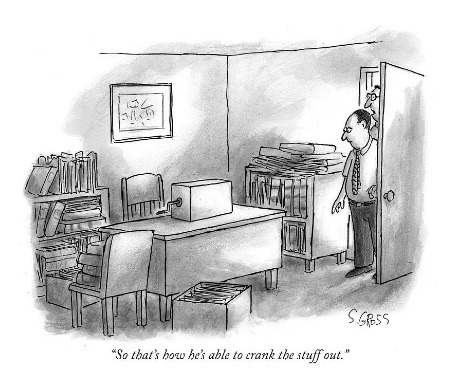
© Copyright, 1999, S. Gross. Buy this print here!
Jane: So this blog is supposed to be an educational resource for aspiring cartoonists and artists, and I was wondering if you had any advice that you wish you’d been told when you were first starting out, or that you think they should know…
Sam: Yeah, which is something you probably have experienced. There’s no love in this. I tell people, especially these young kids up at The New Yorker… sooner or later, The New Yorker is going to break your heart if you’re going to put all of your effort there. There’s no love there— I don’t love The New Yorker, and The New Yorker doesn’t love me. I’ve had, on many, many occasions… what usually has happened,or actually, what has happened, is that the market that I’m dealing with changes editors, and all of a sudden I’m out, and somebody else is in. I had this happen at Harvard Business Review, and the art director was a guy named John O’Connor, and I was selling to him for… I guess seventeen years, and the magazine was faculty run, which meant that it was run by crazies, because there were faculty wars involved, and those people were thrown in, people were thrown out, and people were in limbo, and John was able to survive for seventeen years, until he finally he became a casualty of the faculty wars there, and somebody else took over, and then I was selling sporadically, rather than the way I was selling before. Then later, I got a letter in the mail, hard copy, and they were informing me that they were buying all rights now. So I wrote them a letter back, or posted it by email, I don’t remember, “Please be advised that all the cartoons that you bought prior to this are my property. And if you get any reprint requests, please forward them to me.”
That’s the other thing by the way. And that’s rights. If you own the stuff, it’ll work for you. And I’m not saying every one of them will, but we call these cartoons that grow us money, we call them evergreens. The champion evergreen for me is the frog legs cartoons. I don’t have to say anything more. Everyone knows that one. The other one is the snail cartoon. “I know she’s a tape dispenser, but I love her.” The reason that these cartoons are paying me money— the frog legs cartoon is 47 years old, much older than you— the reason that these cartoons are generating money is because I own them.
I had a friend of mine who was selling to Mad magazine, and he got very involved, and he was selling there for years and years and years… and one day he walked in there, and they told him he was too derivative, whatever the hell that means, and that they were no longer buying from him.
Jane: That’s terrible!
Sam: Well, this happens. He was lamenting to me, “Thirty-five years! Thirty-five years, and I’ve got nothing.” You gotta be very careful with where you’re selling. I was stuffing an envelope in 1977 for Playboy, and all of a sudden this light bulb went off, and I said, “Hey wait a minute! They’re paying three hundred and fifty dollars, but buying all rights,” and I said, “I can’t make any money on them. I’m gonna get the three hundred and fifty dollars, and that’s it.”
If I had sold all rights on that frog legs cartoon, which came out in December 1970, they bought it for one hundred dollars, and that’s what I would have made on it. One hundred dollars—that’s it. Now, this thing has made thousands and thousands and thousands and thousands of dollars. I had a lithograph, which I think I made fifteen thousand on—just on the lithograph.
That’s the other thing— all my cartoons are inventoried and posted in an index, and when a cartoon makes money, for whatever reason, I post it, to the nearest dollar, how much money this cartoon has made. And for the frogs leg cartoon, and the tape dispenser cartoon, I had to add a page with all the action that went on with it.
It’s very very important for you to retain your rights, cause otherwise you’re not gonna last. There are just so many variables going. I just sold the frog legs cartoon to a movie company, and they just came out with a movie about The National Lampoon on Netflix. It’s a prop. I think it’s hanging on a wall that somebody walks by. And I billed them $150 for it.
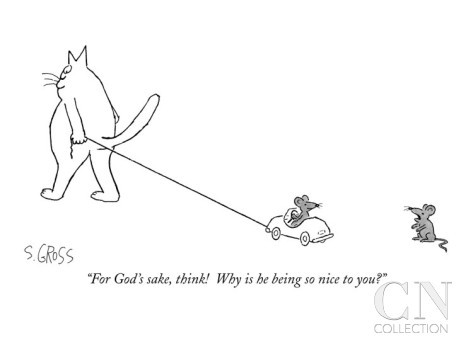
© Copyright, 1998, S. Gross. Buy this print here!
Sam: Hello?
Jane: Oh, sorry, I was just listening!
Sam: So again, rights are very important. Ownership is very important. If you feel like, “Well, I’ll do it just once or twice,..I need the money… I’m desperate,” they feed on you. Basically, their attitude towards you is that you’re the shmuckartist—that’s one word-—shmuckartist, and they take advantage of you. Usually, I just had it recently again, when this woman said to me— and I won’t say what the market was—“We only have the best interest at heart.” When somebody tells you that, they’re trying to screw you. The same thing when they begin the conversation with “You gotta understand,” that’s another rotten deal they want you to go into, okay? I did this cartoon, actually it almost happened to me that way, where you walk into an office, and there’s this guy behind the desk, and every chair in the office is occupied, so you can’t sit down, so you’re standing in front, and there are guys there ( and in this particular case it was all guys)… and I got a cartoon out of it that was in The New Yorker. Basically, you’re supposed to stand at the desk and pull on your forelock and hunch over. I did this gag, with this big corner office,with the big desk, and there’s four- five guys sitting in chairs, and the guy behind the desk… and this poor shlump is standing in front of the desk, and the guy behind the desk is saying, “Work with us, we’re trying to screw you!” I got a gag out of it, finally after these many years, because this happened when I was selling to girly magazines, back in the ‘60s, and sometimes something germinates after 50 years.
Jane: So you’re saying if someone has to tell you that they’re being nice to you, they probably aren’t?
Sam: Well, probably not. Look at it this way, this is a person at Condé Nast— not at the magazine, but dealing with another department —my feeling is, if she’s telling me, “We only have the best interest at heart,” this is not true, because being employed by Condé Nast, she’s gotta have Condé Nast’s interest at heart ahead of mine, because if she doesn’t, she’s gonna get fired. So of course, it’s bullshit.
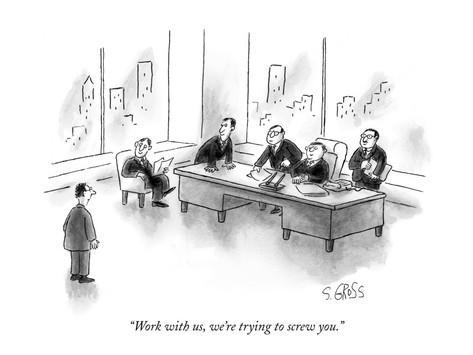
© Copyright, 2009, S. Gross. Buy this print here!
Jane: I remember you would tell me and other cartoonists to be like a street rat. Could you explain that a little?
Sam: Yeah, well, you should figure out where else you’re gonna survive with this thing. For instance, I guess this was the 1980’s, when William Shawn was under tremendous pressure to resign, which it took a while… For some reason, he didn’t take a shine to me, and I couldn’t sell him for a period of 14 months, but I was up there every week, running cartoons through, and then selling to Good Housekeeping, Cosmopolitan, National Lampoon… Basically, I was running this stuff through The New Yorker, and knowing, knowing, that this thing is not going anywhere at The New Yorker. However, I have this stuff, I’m setting it up through The New Yorker… having this stuff now salable for other magazines. It looks pretty good— “Hey let’s go to Cosmo. Let’s go to… I guess at that time, True magazine.” So yeah, you gotta be a street rat. People come up to The New Yorker— “What are you gonna do with this next?” and they go, “I dunno!” Well if you don’t know, you’re not gonna survive.
Jane: Can I tell you a story about the first time I went into The New Yorker?
Sam: Sure!
Jane: It was when they were still at 4 Times Square, and I was scared to death, but I remember specifically that you were extremely welcoming, and made me feel like it was okay that I was there…and you invited me to Pergola [des Artistes] with all of the other guys, and you even drew a map for how to get there, which I later hung up on my wall… I just wanted to say, thank you for making me feel like it was alright for me to be there.
Sam: Of course it was alright for you to be there!
Jane: A lot of times as a young woman, especially in comedy, you don’t get welcomed at all, so it really meant a lot—from you, especially.
Sam: It’s such a tough business, that to be a hard-on in this business is disgusting, for want of a worse word. You try to make it easier for anybody and everybody, because I didn’t know what your work was like—you were there, which was important to you.
Jane: Yeah, and you were just nice regardless, and that says a lot about you as a person.
Sam: Well, thank you. I went through my first first showing, it was at Saturday Evening Post, and I still remember Henry Boltinoff, a cartoonist there, had a sign-in list, so you signed in, and I was behind George Wolfe, and I sat down, and I was so scared. I didn’t ask “Who is George Wolfe?” I just sat there, and Henry Boltinoff walked up to me and said, “Hi I’m Henry Boltinoff,” and I said, “Hi I’m Sam Gross,” and he said, “You’re after that elderly gentleman there—ugly old gentleman there” (they were good friends), “that’s George Wolfe.” So you know, after that, I showed up again—street rat—I showed up every week. I never was a really big seller at Saturday Evening Post. And I got in my studio… I think it was Sidney Harris, no it wasn’t Sidney, it was Art Pottier…. he had taken two signup lists, he kept them, and he sent me two photocopies. Very interesting who was on there, including a couple New Yorker cartoonists. One of them was Alan Dunn, which was a big surprise, because he was a big star at the New Yorker. He at one point had sold more cartoons than anybody else, like 1200 cartoons. But, you know, there’s never a reason for being a putz.
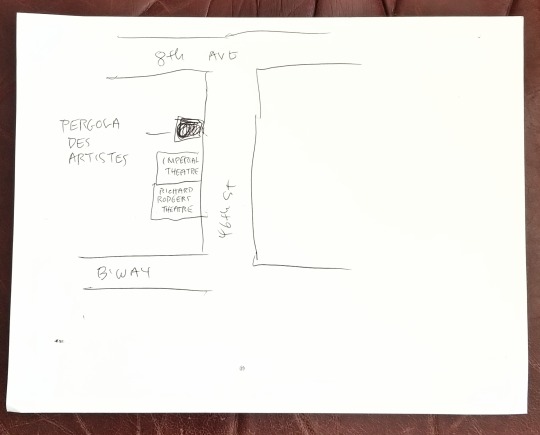
The map Sam drew for me, in case the other cartoonists left for lunch while I was showing my cartoons.
Jane: Is there anything else you wanna say to aspiring cartoonists?
Sam: Again, I guess one thing is the business is changing. The whole publishing business is changing. You’re going up to publishers now, like The New Yorker, and there’s a desert of cubicles. There’s new technology going— for instance, now, I’m involved with cartoon festivals… in the old days, being two weeks ago [laughs] no, more than that… you would have had to send in an original. You would have to pack it, you would have to insure it, you’d have to worry about it coming back. Now you scan and send, and you don’t have to worry about any of this stuff, and this stuff is hangable, and people wanna buy it—they can buy the original. If people wanna buy prints, which is what I prefer, they’ll buy prints…and even submitting to magazines now, The New Yorker, which I”ll do tomorrow, is scan and send. I basically don’t have to go in. Usually I do go in, because one, it breaks up the week… and I have lunch with cohorts. It’s changing, and what it’s changing into I don’t know, but I am aware of it. Listen, there are very few magazines that I’m dealing with now. A lot of people I’m dealing with, in a way, are kinda desperate with what’s going on. It’s going on for them also— it’s going on for us and it’s going on for them, these monumental changes. My only advice on this is to be aware of it. I can’t give you advice for how to act upon it. I guess that’s it!
If you enjoy this blog, consider donating to the Patreon! And if you would like more art supplies in your life, you can follow Case on Twitter and Instagram!
24 notes
·
View notes
Text
Jane Mattimoe (aka A Case for Pencils).
I've been interviewing mainly New Yorker cartoonists on here for close to nine (!) years, which is wild to think about! A lot has changed since I started this blog in 2014— back then, I had a broken wrist from a fall I had while working in a restaurant, and I didn't have the money for a laptop for months, so I would go to the New York Public Library to use their public use computers to work on Case during the daily half hour increments that were allowed at the time. I currently have a mostly working laptop and a fairly healthy wrist, which is a great improvement!

Here I am at my desk, repping the NYPL on my mug. I know it looks messy under my desk, but I promise all of those art supplies are neatly stacked!
I started this blog as a young baby artist who wanted to open up a world to people who might not otherwise have a chance to learn from some of the greatest living artists of all time. I never went to art school (I found it unaffordable), and knew there were plenty of folks out there like me who might not be able to go to classes, but who certainly deserved to hear from some of the top professionals in their field. Since I had known many New Yorker cartoonists for a couple of years at that point, I figured why not see if they will help me out? And, well... they did!
Doing this blog is a LOT of work, but it has been thrilling to hear many many young people (several of which that I have interviewed on here!) say that they learned a lot from reading it.
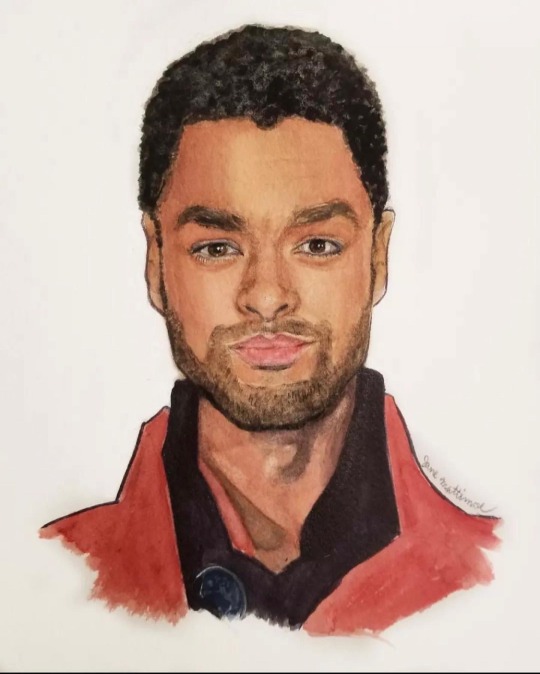

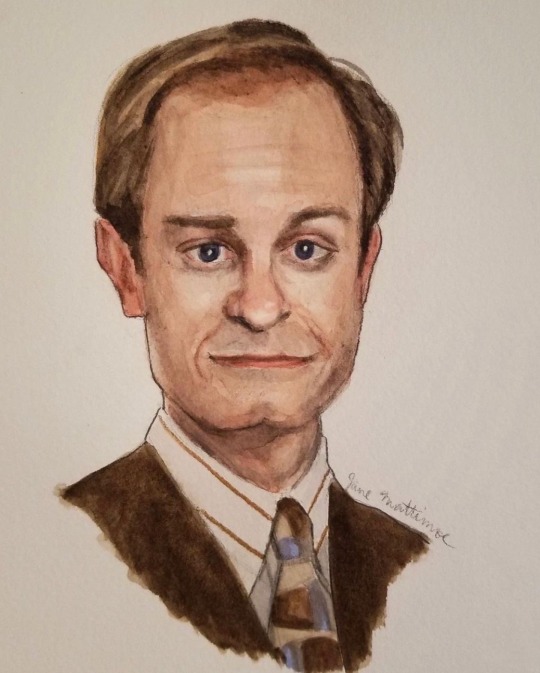
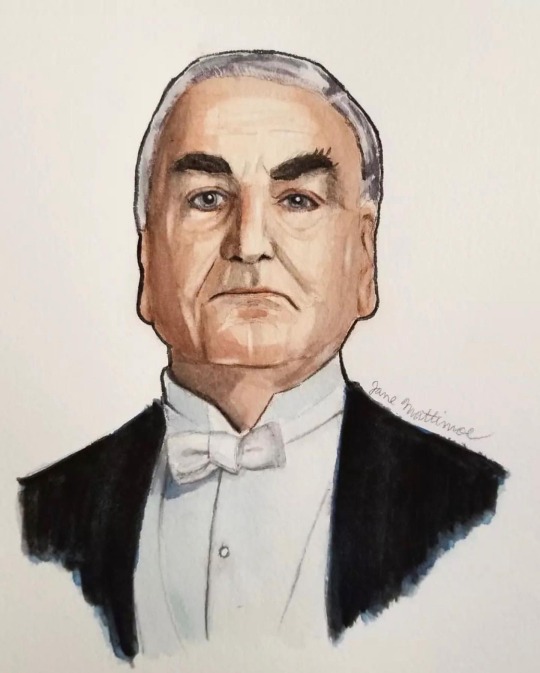
I don't put myself on here very often, so I thought I might take the time to talk about some of my more recent art projects. Above are some of my watercolor portraits. I have been working hard on trying to achieve more luminosity in skin and watercolors are a beautiful tool for achieving that. The key is lots of layers and lots of patience!

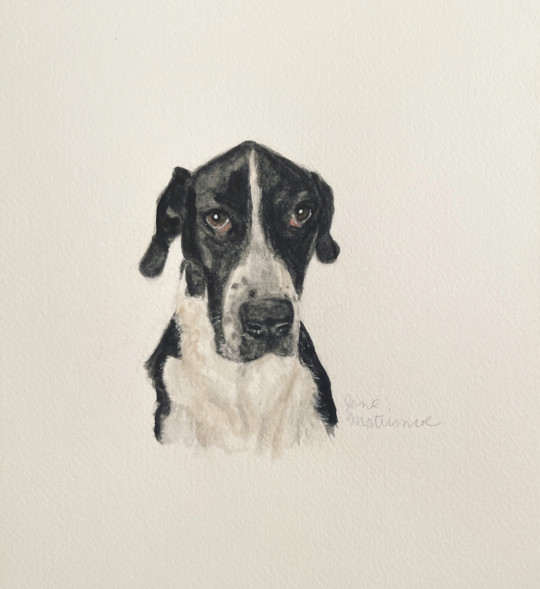
To the left is a recent painting I did of some ruins. Again, my goal is create light. The painting to the right is a pet portrait that I did a couple months back.

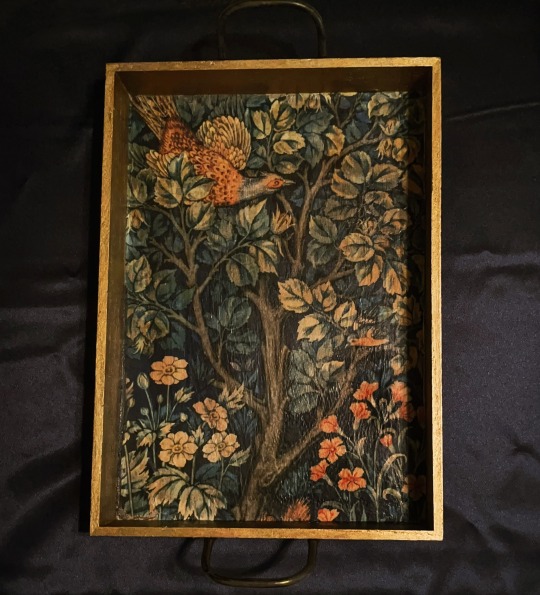
I've been learning lots of new crafts. To the left is a bird house that I painted using the cheapest acrylics possible. Usually with art supplies, cheaping out is disastrous, but for some reason, 80 cent acrylics seem to be working out for me? If you are an acrylics artist, please feel free to tell me why I'm wrong to use them. I also have been having fun with decoupage (photo on the right), which is basically using special tools to glue fancy tissue paper etc. onto various objects (I've slowed down on this a bit because I've run out of things to cover in decorative paper).

I've been having a lot of fun making decorative objects—I feel that it is important to make beautiful things for yourself when you're an artist. Having pretty things doesn't have to be expensive if you make them yourself, and they become keepsake items. I made this little gingerbread garland pictured above by cutting out felt and frosting it with fabric paint.
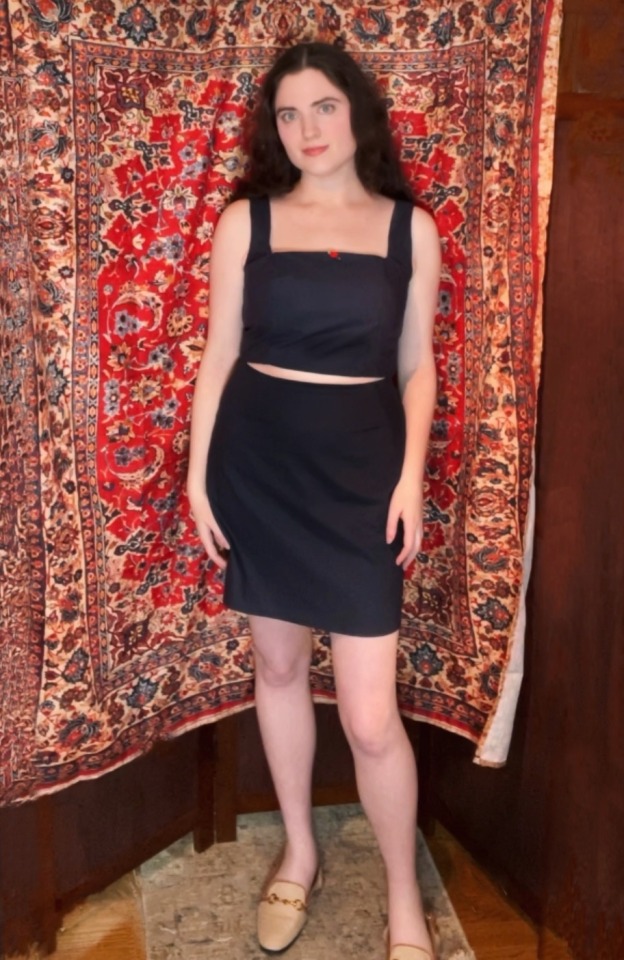
I've also been having lots of fun with sewing. This is a two piece set that I made recently. It's really fun to be able to think of something I would like to wear, and make it! Sewing is a different kind of art for me—with painting, I am in a strange incoherent state. But with sewing, I am following all sorts of instructions, and thinking about it in a far less abstract way. It's definitely a different usage of my brain, which has made it a fun challenge.
I hope you all are doing well, and learning new ways to make art! I appreciate all of the support over the years, and hope to continue this blog for quite a while longer. Thanks for reading!
You can find my Instagram here, my website here, and Twitter here!
------
If you enjoy this blog, and would like to contribute to labor and maintenance costs, there is a Patreon, and if you’d like to buy me a cup of coffee, there is a Ko-Fi account as well! I do this blog for free because accessible arts education is important to me, and your support helps a lot! You can also find more posts about art supplies on Case’s Instagram and Twitter! Thank you!
22 notes
·
View notes
Text
Gustavo Magalhães.
Bio: My name is Gustavo Magalhães and I am a Brazilian illustrator/cartoonist. I live in Caçapava, a small town in São Paulo state. I have worked as an illustrator since 2013.
As an editorial Illustrator, I've been published by The New Yorker, Golf Digest, Forbes, The New Republic, GQ Magazine among others. The first time I was commissioned by The New Yorker was in 2021, for "The Critics" session on a portrait of Sandra Oh" for her new show at the time, "The Chair," which aired on Netflix.
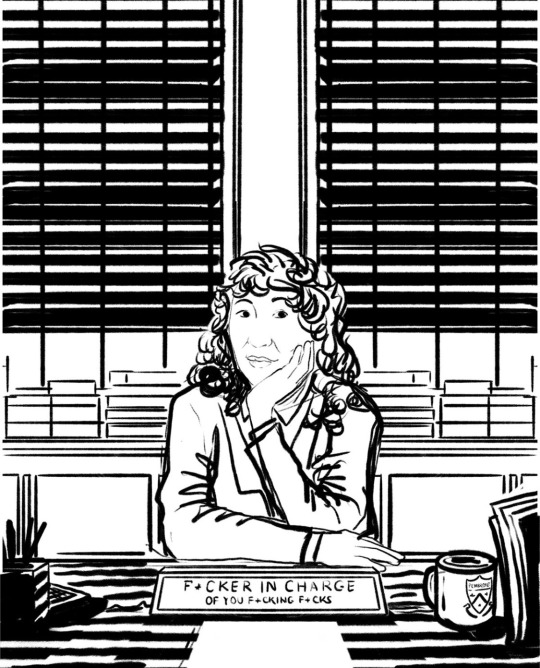


Sketch, refinement, finished piece.
I also have a web comic strip called "Curb Talk." It's published twice a week in a classic Comic Strip format.
Lately, I am a Senior Illustrator at a Studio called "Fried Design Company ,'' in Springfield, Missouri. But I work from Brazil.



AOIKTYE Procreate Keyboard for Ipad / Apple Pencil / Ipad Pro
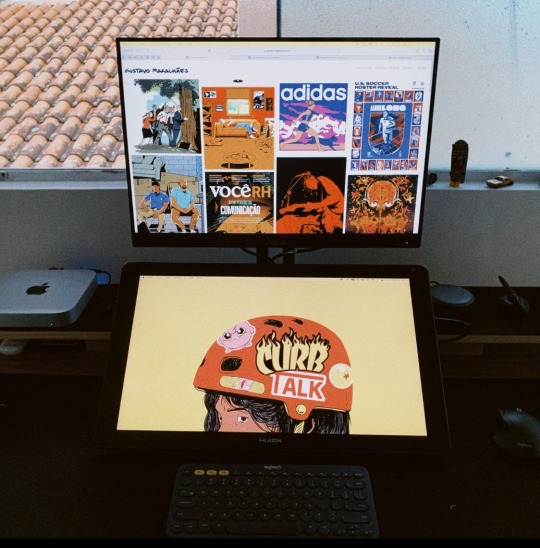
Mac Mini / Asus Proart PA248QV Monitor / Huion Kanvas Plus 22 Display
Tools of choice: My process of work is mixed, I like to sketch the first thumbs and sometimes more advanced pieces on paper and "ink" / color them using digital tools. It's been 5 years that more than 90% of my final pieces are done in digital, and along that period I discovered that I'm a person that likes to do a significant amount of tests while inking, and digital tools help me a lot in that.
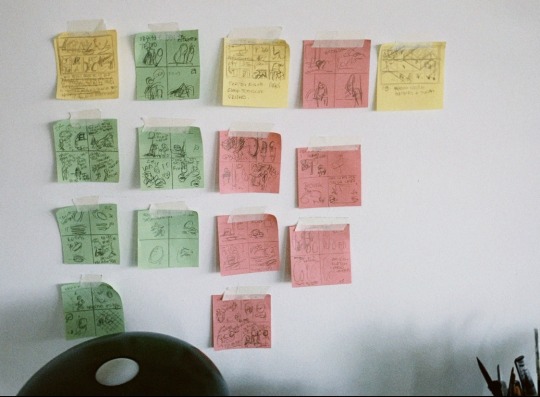
Lately, I've been trying to achieve an inking process that I could do both on paper and on digital, that way I could do my pieces however I feel on that day, and my comic strip has been a good place for this test field, and I'm enjoying that mix very much.


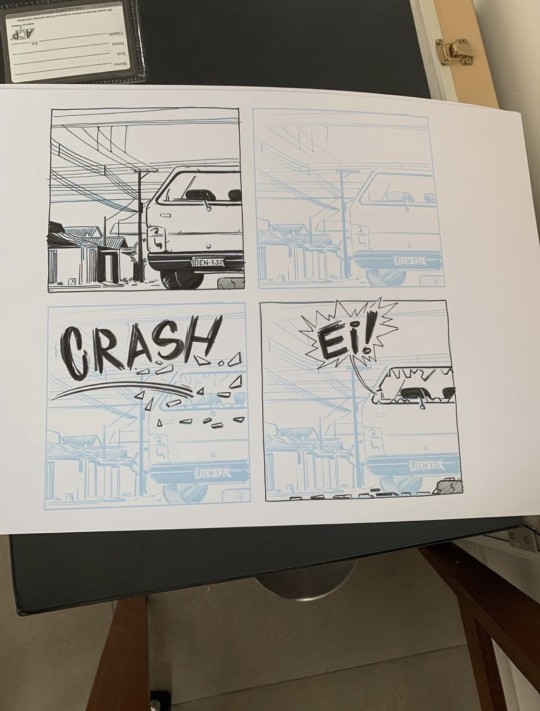


Pentel .09 Mechanical Pencil / Staedtler Water Brush / Staedtler Pig LIner 0.3 / Royal Talens No. 2 Brush
If you were asking me "You are on a desert island and can bring just one setup with you," I'd say I would bring my iPad. It allows me to sketch with an "analogic feel," where it's important to feel that you are actually crafting something. But it also gives me all the testing possibilities the digital work has.
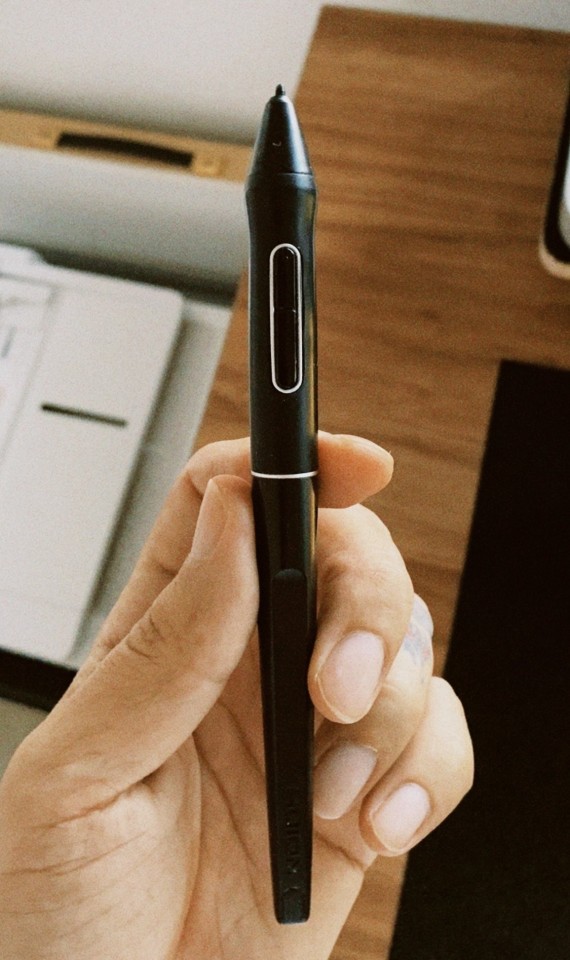
Huion Display pen Battery Free Pen PW517
Tool I wish I could use better: Coloring in general, but mostly painting. It's always a struggle to translate what I have in mind to the final piece. And there are some aspects of texture and rendering that you can only get in analogical tools like gouache, oil, watercolor. Of course there are excellent artists that do those digitally, but there are certain aspects that you need a physical touch to achieve and I have never done anything like that. Maybe one day.
Tool I wish existed: A chair + desk set that automatically corrects your bad posture whenever your body is hurting or sitting in the wrong way. I hate having lower back and wrist pains while working, haha!
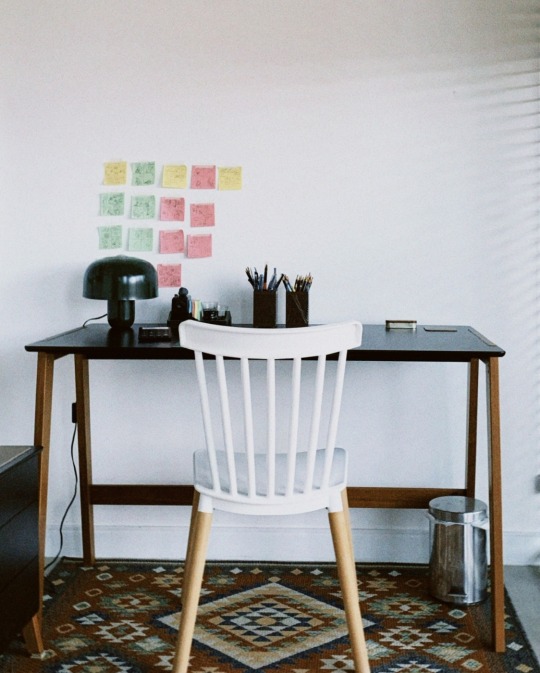
Tricks: One thing I brought from the full analogical days is an adaptation of the "drawing from your shoulder thing." Personally, I found it very hard to do, so I use a bandana on my pen hand, and use the other hand to pool this and drag. This is a thing that helps me a lot when drawing straight lines with a handmade feel, instead of just using shapes in Photoshop or any digital tool for precise lines.
Misc: "Go easy on yourself and have fun!"
I never thought I could work with illustration. I spent almost a decade working in the aircraft industry (half of it doing freelance illustration jobs for local bands and brands) and the factory mentality lever left my mind, just now (after 10 years as an illustrator, 7 as my main activity), I'm recovering the passion that I had as a young doodling kid. Everyone sees artistic careers as this romantic thing, but it's always a struggle (at least for me) to face your passion as an obligation day to day, and make this trade of time and love for money. So after several years going hard on myself I am finally learning how to be lighter and having more fun and joy in my work.
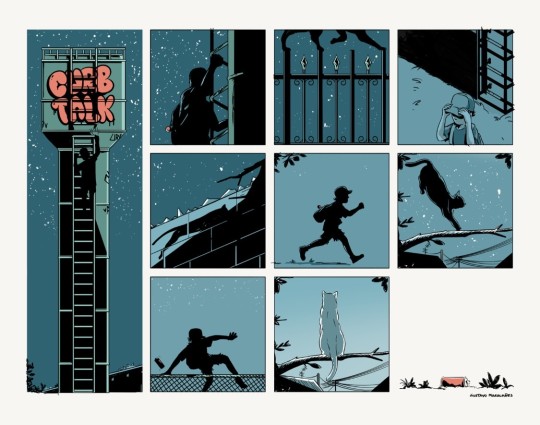
(Outro/Editor's note: I asked Gustavo if he would care to discuss how working in the aircraft industry affected his work as an illustrator):
I think the biggest influence I got from this industry was the routine and how to deal with work. Artists naturally tend to be less rigid in the aspect of routine because of the nature of creativity, and I think that having almost a decade working in another industry in a more conservative environment helped me in how to take it more serious in all aspects, from my day to day process, to how to treat my clients and deadlines.
That's basically the biggest influence and learning I got from this period. How to understand that the work isn't just the drawing and thinking, but everything that happens behind it, from the clothing choice I pick to work at home, from the time management I need to have in order to balance all simultaneous projects I have.
Website, etc.
Portfolio
Curb Talk Comics
Instagram
Twitter

----
If you enjoy this blog, and would like to contribute to labor and maintenance costs, there is a Patreon, and if you’d like to buy me a cup of coffee, there is a Ko-Fi account as well! I do this blog for free because accessible arts education is important to me, and your support helps a lot! You can also find more posts about art supplies on Case’s Instagram and Twitter! Thank you!
17 notes
·
View notes
Text
Erika Sjule.
Bio: I’ve been published in The New Yorker, The Nib, and The Stranger. I refuse to work with anyone whose publication doesn’t start with “The.” Unless I ever get an offer to — then I will.
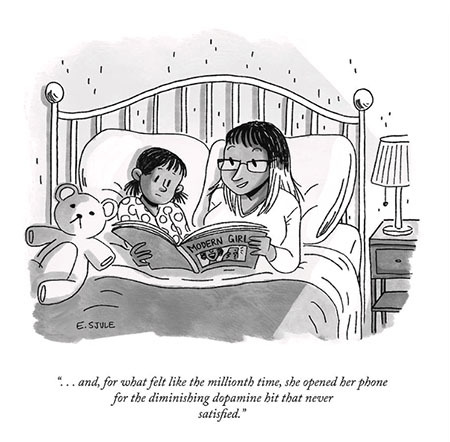
Find this print here!
Tools of choice: You have been forewarned, my tools are a bit average, but maybe I can chalk that up as “standard” or “classic”. Yes, let’s go with that.
Okay, so— I live and die by my Palomino Blackwing pencils. I am a member of their cult and there is no coming out of it (help me).
I recently discovered their “matte” pencil and I may have found my pencil soulmate. I am very excited. Wedding invites TBD.

For the past several years I’ve become gleefully addicted to Shorthand notebooks for my sketchbooks.
I’m a sucker for simple, classic designs with lots of color options. They’re like Moleskine, but better in my very biased opinion.

I use digital tools to finish my art pieces. I use an iPad, Apple Pencil, and the Procreate App. It really has been a game-changer ever since I got this tablet combo. It has allowed me to create much more polished art.
The only downside to these tools is that the power of ‘undo’ can really trigger my perfectionism, which can be kind of exhausting.
That’s why I always brainstorm on paper— because it allows me to be messy and weird. It’s a much more enjoyable headspace to be in.
Process sketches for this humor piece:


Link to finished humor piece:
Tool I wish I could use better: I would love to watercolor more of my work. I love water coloring, but I haven’t really been giving myself the space to re-incorporate it back into my process. I kind of love that it’s so difficult, honestly. It forces you to let go of control, which can feel surprisingly meditative once you’ve given up the compulsion to be perfectionistic.
Tool I wish existed: A magic wand of creative focus. I’ve been told I’m highly distractible. I also know for a fact that I am. Honestly, maybe a more realistic tool would be a digital tool (which probably exists?) that blocks me from the internet when I’m working. I am constantly distracting myself with group chats, Slack, and social media.
Tricks: My greatest trick is going to a café to people-watch with nothing but a sketchbook and pencil. I really do think that focus is increasingly difficult for everyone and my greatest tool is allowing myself to sit in stillness and boredom. It’s shockingly difficult, but if you disconnect from the internet and other people, and just sit in a space and let your mind wander, it can be revelatory. If I sit in the stillness long enough, I can even feel like I’m time-traveling back to childhood. It brings a mental clarity that is very hard to find in adulthood. This headspace is a nesting ground for creativity in my experience.

Misc: I wish I had taken my art more seriously, sooner. I didn’t grow up with any examples of professional artists so I grew up thinking my ability to draw was kind of a cheap trick.
I wish I had been taken to art museums or comic conventions growing up. I mean, clearly, I’m fine and everyone feels “behind”, but I say this mostly to inspire anyone who has anyone in their lives who you think may benefit from such trips. Take the kids to the art shows! It can change their lives!
Website, etc.:
Website
Instagram
Twitter
Physical Prints
Subscribe to my silly comics newsletter!
———
If you enjoy this blog, and would like to contribute to labor and maintenance costs, there is a Patreon, and if you’d like to buy me a cup of coffee, there is a Ko-Fi account as well! I do this blog for free because accessible arts education is important to me, and your support helps a lot! You can also find more posts about art supplies on Case’s Instagram and Twitter! Thank you!
802 notes
·
View notes
Text
Caitlin Cass.
Bio: I’m a cartoonist, installation artist, and educator. I sold my first cartoons to The New Yorker in 2018 and have been a somewhat erratic contributing cartoonist since then. I also self-publish a comic periodical called The “Great” Moments in Western Civilization Postal Constituent, which I began in 2009. These comics are primarily about failure throughout history and irrational hope.
Sometimes they get weird and allegorical. Currently I’m working on a graphic novel about the history of women and voting rights in the U.S. due out with Fantagraphics in 2024. It has ghosts.

Favorite Cartoon as of today (find this print here)
I have degrees in liberal arts and visual studies. First I studied the western canon, and then they gave me an art studio and I studied the breakdown of the Western Canon. I found it all amusing.

How to Fly in America, mixed media installation at Hallwalls Contemporary Art Center, 2016
After grad school, I taught high school art at an all girls school in Buffalo, NY, and now I am an illustration professor in Omaha, NE. Teaching helps me get over myself, which I think is a necessary step in my creative practice.
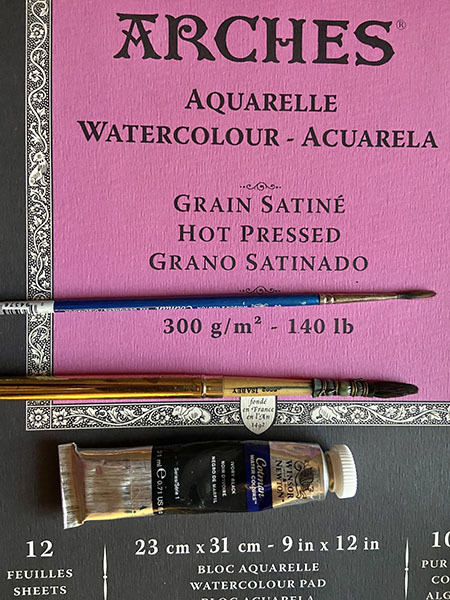
Tools of choice: So far for New Yorker print finishes, I’ve used the same tools for the sake of continuity, but in all my other work, I switch tools project to project. For The New Yorker finishes, I use any old pencil, Speedball Super Black ink, a size 2 Cotman 222 designer brush, whatever detail brush I haven’t destroyed, and a squirrel hair Isabey brush for washes with ivory black tube watercolor. I do the line
art first, then scan, then go back in on paper and finish with the washes, then scan the washes and layer them in Photoshop. I do this because it gives me maximum control over the heaviness of the washes, and it also means I can darken and clarify the line work.
For Daily cartoons on The New Yorker’s website, I usually just work on my ipad with procreate. For weekly batches, I do roughs on the ipad, except for the first 133 cartoons I submitted, which were all done on paper. I haven’t settled on my favorite digital brushes and like to experiment. I’m convinced the digital brushes teach me things about analog materials I didn’t know before. I like to lose myself in digital textures when I get stuck.
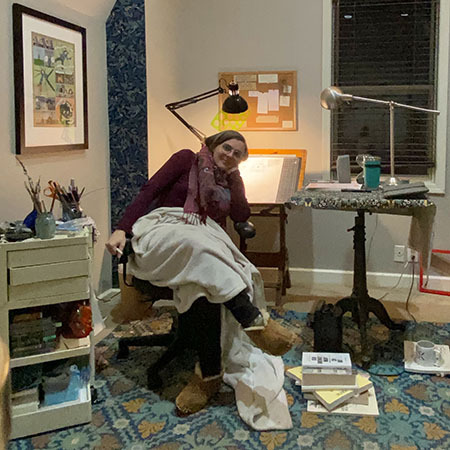
Tool I wish I could use better: I think a little incompetence with tools gives visible vibrancy to a drawing. It’s way less fun to know what you’re doing. That said, I’ve been getting really into nibs lately. Nibs have such sensitivity that I imagine you can always get better at them. So far, the Hunt imperial 101 nib is my favorite, and I’m enjoying its springiness and versatility. I also like how charging a nib with ink keeps you in your seat and forces you to stop checking your godd-mned phone at least until the ink runs out. I feel like nibs might have something to do with the lilting verbosity of 19th century
authors. There’s just something about this tool that makes you want to keep describing things with flourishes.
Tool I wish existed:
Non-photo blue pencils that self-sharpen.
Tricks: My trick is to start with nothing. I usually start by drawing a person’s face and then I try to imagine who that person is and where that person is and who they are talking to. My process is just like meeting people and seeing what they’re thinking about. Sometimes they are interesting, and sometimes they’re totally boring, just like real people. Whoever they are, I try to get inside of their heads and empathize with them. As I’m drawing, I catch their thoughts, and let them go in and out of focus until they find a resting place. By the time the image is done, there is a caption to type out. Then I try to make the caption more succinct.
Once in a while I have an idea before I start drawing, but honestly those cartoons usually don’t work as well. They are more self-aware or scripted. They feel less surprising. The only way I’ve found to make a surprising cartoon is to surprise myself as I’m drawing it. I have to lose my self awareness to see into these imagined minds. This means I occasionally have weeks where I can’t get out of my own head and empathize with all these others. I don’t submit those weeks.
Other times, the thoughts people are having aren’t particularly funny, or the places I put people are surreal and out there and just too many steps for the reader to follow. I still submit those cartoons— they just don’t get purchased. It’s like I just keep meeting people and Emma picks which people are funny. I often don’t know if something will be funny to other people. I think most of the people are funny when I first meet them because I’m so delighted by meeting them. It takes a week and a rejection to realize that some of them were just puzzling.
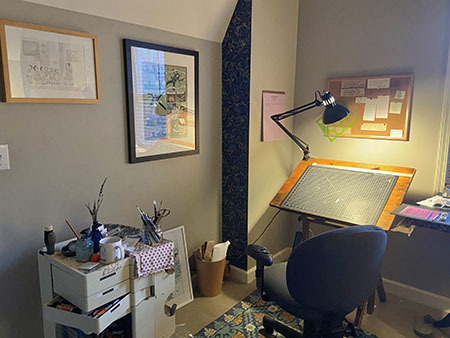
Misc: I suppose I could start waiting a week before submitting cartoons to see if they are funny or just puzzling, but I think that would kind of take the joy out of it for me. I’m grateful for the curation. Of course, I’m fortunate that cartooning is not my only income stream, because all this dreamy empathy wouldn’t work for me under pressure. I don’t think this method is better than other people’s methods. I have mad respect for people who can sculpt and refine and edit a joke into being. I just haven’t figured out how to do that, there’s too much ego in that for me, too much control. For me the jokes often come from giving up control and watching things emerge on the page. Maybe I’ll grow into editing. I’ve only had like 13 cartoons in The New Yorker. There’s time.
Of course, now that I said that I will probably die tomorrow.
Website, etc:
www.caitlincass.com
Instagram
If you enjoy this blog, and would like to contribute to labor and maintenance costs, there is a Patreon, and if you’d like to buy me a cup of coffee, there is a Ko-Fi account as well! I do this blog for free because accessible arts education is important to me, and your support helps a lot! You can also find more posts about art supplies on Case’s Instagram and Twitter! Thank you!
23 notes
·
View notes
Text
Emily Bernstein.
Bio: I’ve been published by The New Yorker magazine, VICE, and WNYC. I also illustrated a book for Princeton University Press called “On Being Me,” available on the PUP website, and at your fave independent book seller!
My fave New Yorker cartoons I’ve done:
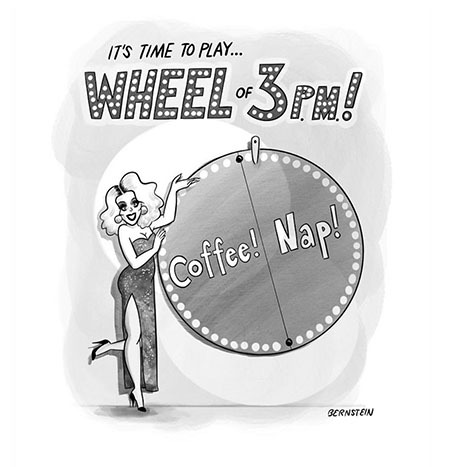
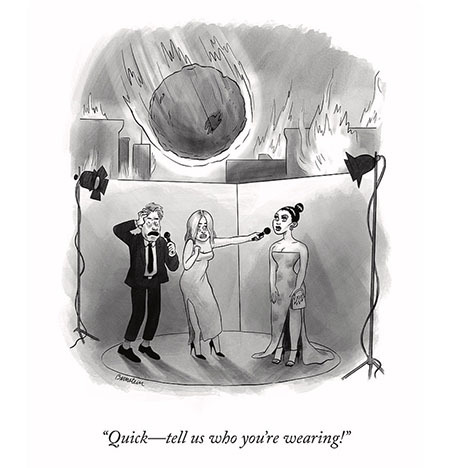
Find these prints here and here!
Tools of choice: I sketch my cartoon ideas in a floppy, unlined Moleskine notebook (light, portable, and sold in packs of three so I don’t run out too often, and I can waste my limited foresight on stuff like, “if I get a matcha now, will I be up all night?”). I also like Pilot G-2 pens. I’m the annoying person in class nervously clicking their pen throughout the test, and I like to clip them to the notebook so I don’t leave them in the bottom of a tote bag. For cartoon batches and final art submitted to The New Yorker, I work in the unfortunately-named “Procreate” app on my iPad.

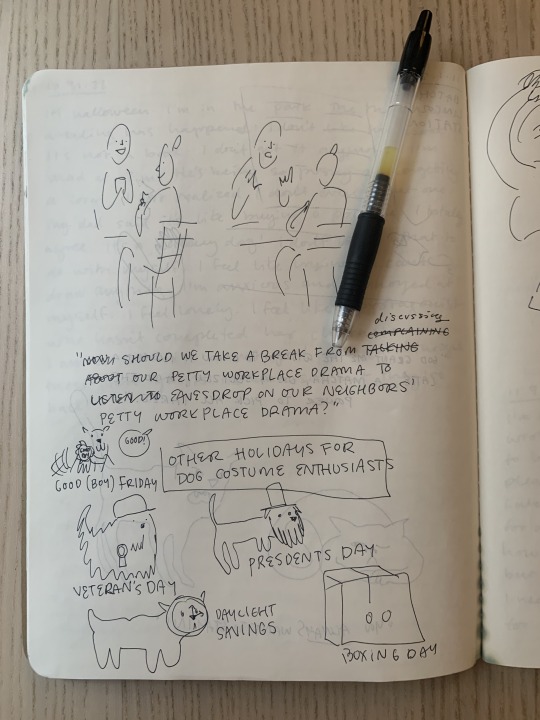
My notebook :)

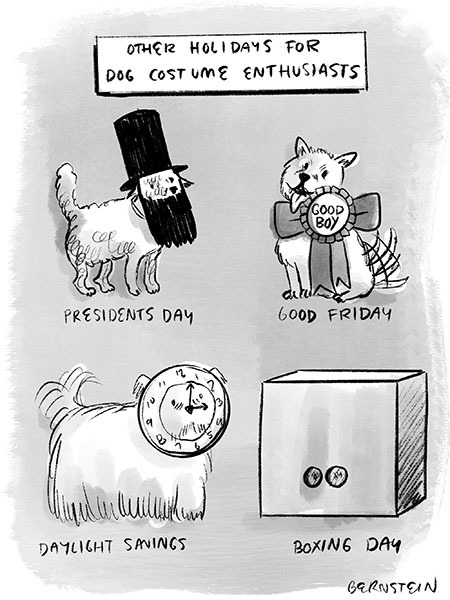
Procreate drawings of the previous notebook sketches (rejected, sadly).
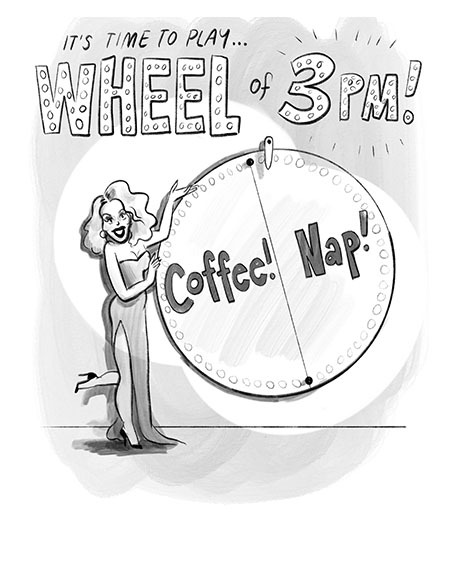
Original sketch of one of my fave cartoons!
Tool I wish I could use better: A tool I wish I could use better is watercolors. I love painting with them, but I don’t get how to use them well. Maybe I don’t actually wish I knew how to use them properly, because then I’d feel like all my watercolors had to be “good.” It’s important to have creative things you do for fun and let yourself be bad at.
Tool I wish existed: A tool I wish existed is a vacuum that sucks self-doubt out of your head. I would want to collect it all in the dust trap, and look at it with removed fascination, like when you pop a pimple or clean your ears with a q-tip, like “wow, I can’t believe that was all in my HEAD! Gross.” Worrying that I’m not going to be funny or draw something well is the thing that most often keeps me from being funny or drawing at all.
Tricks: The best tricks I’ve learned are 1. To try to make myself laugh, 2. To write down all the ideas, especially the bad ones, so you can get on to the next ones, and 3. To copy my backgrounds from photos. I hate drawing buildings and rooms. What am I, an architect?
Misc: Uuuhhhh I guess something I wish I had been told more when I was first starting out is that I could do it? I spent a lot of time feeling not “enough” and worrying (for good reason, to be fair) that I could never make a living as an artist. What few people actually told me is that I would figure it out, and that it could be fun. Figuring out what you want to make is more important than figuring out how you can make money doing it. So start there and let yourself see what happens ¯\_(ツ)_/¯

Other tools of the trade:

My intern
Website etc:
My website is www.emilycbernstein.com and you can buy signed prints of my work at www.emilycbernstein.com/shop!
I also make oil paintings and sometimes do commissions. You can contact me via my website :)
Please, for the love of god, follow me on Instagram at emily.tif
I'm also starting a substack! https://emilybernstein.substack.com/
<3
---
If you enjoy this blog, and would like to contribute to labor and maintenance costs, there is a Patreon, and if you’d like to buy me a cup of coffee, there is a Ko-Fi account as well! I do this blog for free because accessible arts education is important to me, and your support helps a lot! You can also find more posts about art supplies on Case’s Instagram and Twitter! Thank you!
#emily bernstein#emily bernstein cartoonist#how to draw new yorker cartoons#art supplies#what to use to draw cartoons#pens that cartoonists use
106 notes
·
View notes
Text
Lonnie Millsap.
Bio: I haven't been published in many publications besides my cartoons that appeared in The New Yorker. One of my New Yorker rejected cartoons appears in a book titled Send Help, a book of desert island cartoons. It's edited by New Yorker cartoonists Jon Adams and Ellis Rosen. I had one cartoon published in the final print copy of Playboy magazine. I've always joked that my cartoon put the magazine out of business, and shhhhhh...don't tell anybody, but it was also a rejected New Yorker cartoon. I also have a comic called bacon that runs on gocomics.com/bacon, a site that Andrews McMeel Universal runs. I've also self-published ten single-panel cartoon books. My latest book, from 2022, is titled Hit It To The Mermaid!

Find this print here!

My work station is pretty much my bed, Ipad, Apple pencil, computer, telephone and tv remote...don't judge me!!
Here is a work in progress through completion:



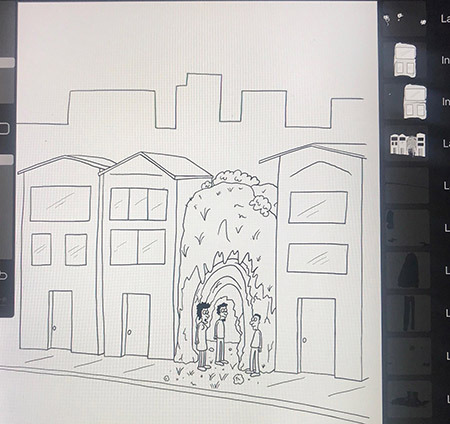
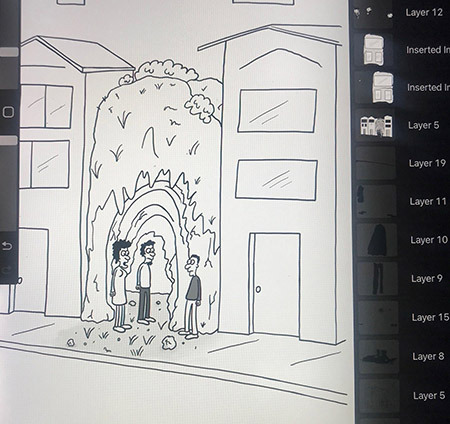
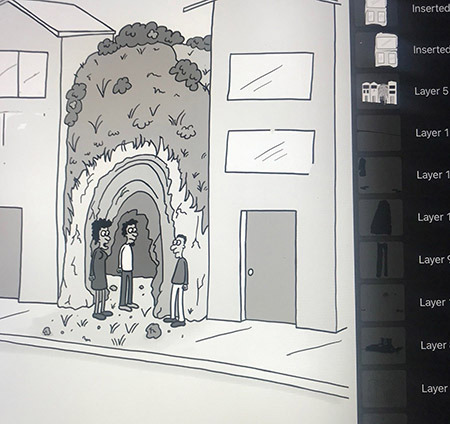

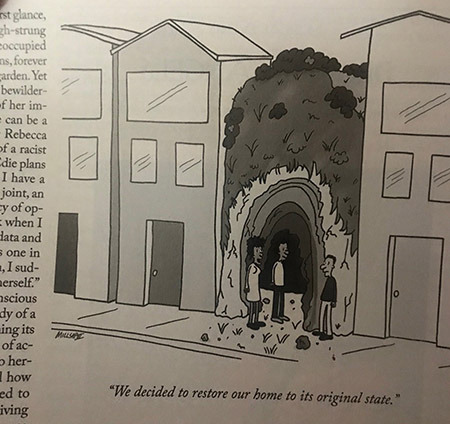

Find this print here!
(Starts in sketchbook, and added to Ipad, worked on in procreate in layers, shading added, type and size formatting takes place in Photoshop on a computer. Magazine in my hand, at the end.)
Tools of choice: Right now, the art tools that I can't live without are Papermate pens, sketchbooks, Ipads, and basketball. I come up with lots of my ideas while I play basketball. I draw my sketches on paper, but for the most part I draw my cartoons on an Ipad. Apple pencil is the best for me. It saves me a lot of time vs. drawing on paper, scanning, etc.
Tool I wish I could use better: I wish I could use actual paint brushes a little more effectively. I like painting details of my cartoons on large canvases, and I feel like I become uncoordinated as soon as I start to paint.
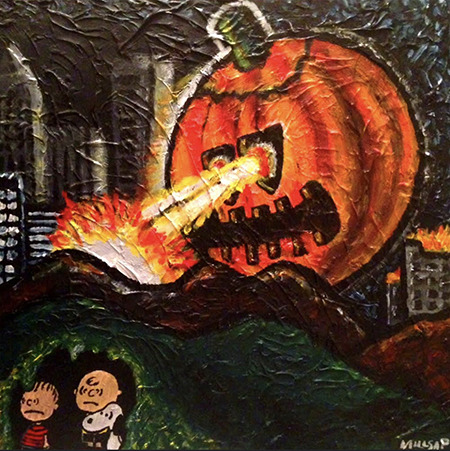
The Great Pumpkin: Linus's Fault- acrylic 30x30
Tool I wish existed: The drawing tool of my dreams would be some type of direct from the brain to The New Yorker magazine page tool, while I lay sleeping on a Jamaican beach. Honestly, though, the Ipad, the Apple pencil, and the Procreate program work like a dream for me.
Tricks (is there a particular kind of eraser that has made your life easier? something you fashioned together out of rubber bands? a technique for doing a layout?):
I don't have much use for erasers, since I don't use pencils in my drawings...and I never make mistakes. Ever. What does that even mean? I use pens in my sketchbook. I don't have any specific tricks, but my layout is normally formatted as a square. I tend to work best within the restraints of a square.
Misc: (can be anything, really. Something you wish someone had told you when you were first starting out, a picture of your lunch, your social security number… so long as it’s not NSFW!)
My social security number is... ohhhh. I kind of wish there were computers when I started cartooning. I had no idea what to do with my cartoons until the internet came along, so I had plenty of years of down time.

Website, etc.:
My New Yorker cartoons can be seen and purchased here.
My books of cartoons can be purchased here.
My 3-times weekly comic can be seen at www.gocomics.com/bacon
If you enjoy this blog, and would like to contribute to labor and maintenance costs, there is a Patreon, and if you’d like to buy me a cup of coffee, there is a Ko-Fi account as well! I do this blog for free because accessible arts education is important to me, and your support helps a lot! You can also find more posts about art supplies on Case’s Instagram and Twitter! Thank you!
570 notes
·
View notes
Text
Sarah Kempa.
Bio: My cartoons and comics have appeared in various publications, including The New Yorker and McSweeney’s. I also had a short little comic-activity book published with AMU titled, Where Did My Roommate Put My Charger?: A Kind-Of Activity Book for Kind-Of Adults.

Find this print here!
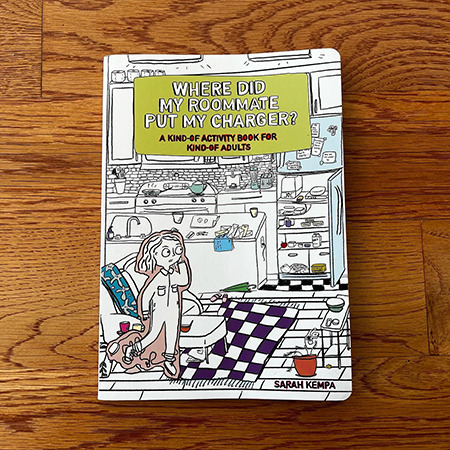
Book link
Excerpt from book
This is my favorite cartoon they've published, but I'd be remiss if I didn't mention my true favorite (no offense cartoon!) which is this comic, done in honor of Dolly Parton and the Moderna vaccine.
Tools of choice: I draw all cartoons I pitch to The New Yorker on an ipad using Procreate.... I will forever appreciate the grace it gives me in making mistakes, and the speed of switching tools and adding a wash. I draw anywhere from 7-10 cartoons a week to pitch to the New Yorker, which for me honestly feels like a lot of drawing!! (Bravo to all the other cartoonists who accomplish such a feat without breaking a sweat!)
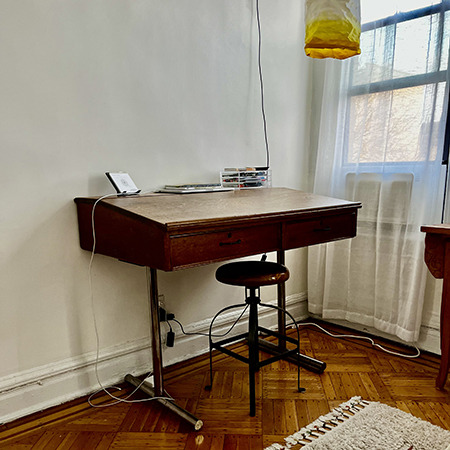
For the cartoons I pitch, I don't need everything to be perfect, but I do want it to feel like it could be a cartoon in the magazine, so I do my best to add a wash and make them look the part. The most wonderful thing about Procreate is I can do all that while sitting on the sofa watching/not watching Real Housewives, with a small dachshund napping on my lap, and not spill one drop of ink. Just as the cartoon gods intended!
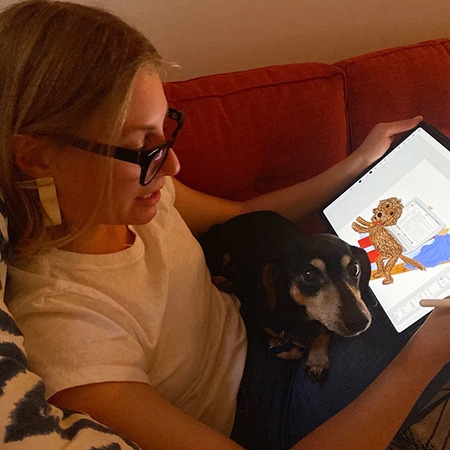
For idea generation, I use Strathmore recycled newsprint, essentially a giant 18x24 pad of scrap paper. I will cuddle up with this pad and go through my different idea generation exercises, until I find something I want to make into a cartoon. The paper is nothing fancy, and I can fill it up with as many things as I want without running out of space. It seems like it's not very practical or portable, but I actually find it to be the opposite. I carry it around the apartment with me, take it outside, use it as a tray to move my workstation from the sofa to table, and have even leveraged a sheet or too as wrapping paper! It's perfect. I use these Muji gel ink pens with it and they pair nicely.

Tool I wish I could use better: Right now I'm working on using watercolors. I like the idea of bringing a little portable watercolor set to the park, and then painting nature, but those are both things I have never put into practice, but sound really nice in theory.
Tool I wish existed: I always make a mess whenever I use ink, wash, water colors, pastels... you name it. I'm thinking it would be nice to have those invisible ink markers that only work on a certain type of paper, but instead with markers, my paints, pastels, inks, etc that I can't use without making a mess.
Tricks: I'm trying to quite literally do less. I burn out creatively more easily these days, so I'm making the decision to do less, and affirm to myself that it is okay. :) Maybe that means submitting less cartoons in a batch, or not drawing everything I think of that could be a cartoon, just trying to be a bit more intentional to keep the burn out away.
Website, etc.
My book! I think it would make a good gift?
Instagram
Etsy
———–
If you enjoy this blog, and would like to contribute to labor and maintenance costs, there is a Patreon, and if you’d like to buy me a cup of coffee, there is a Ko-Fi account as well! I do this blog for free because accessible arts education is important to me, and your support helps a lot! You can also find more posts about art supplies on Case’s Instagram and Twitter! Thank you!
83 notes
·
View notes